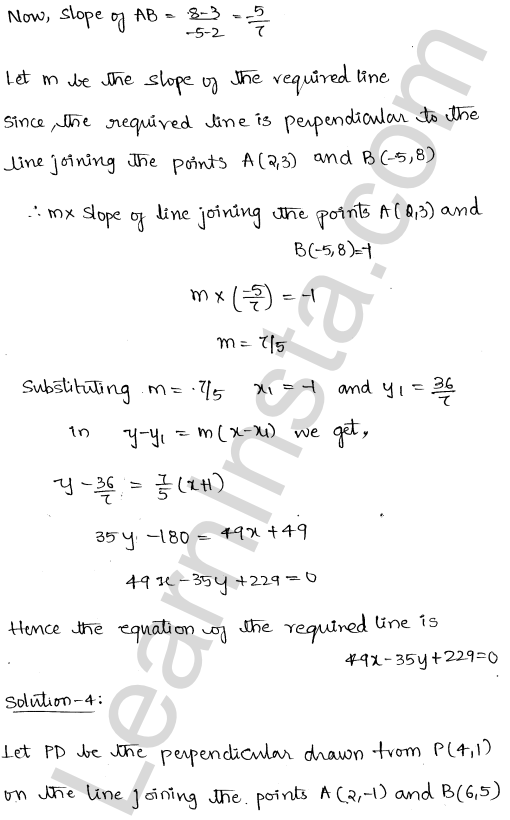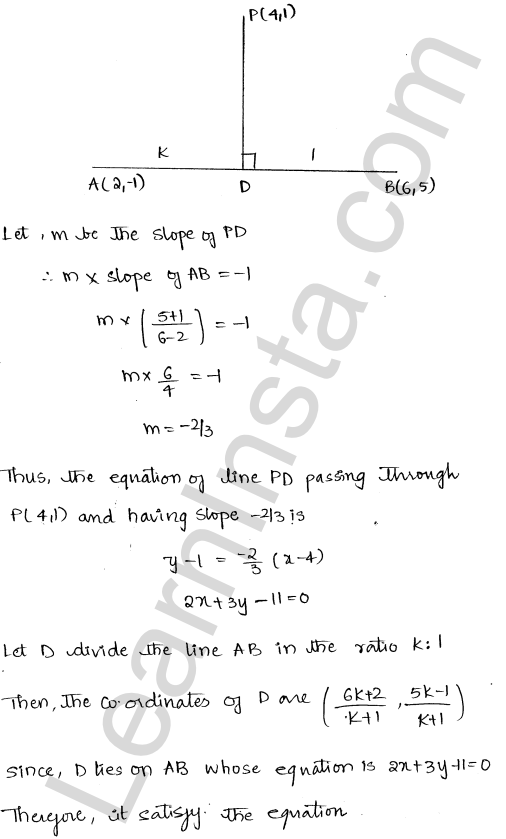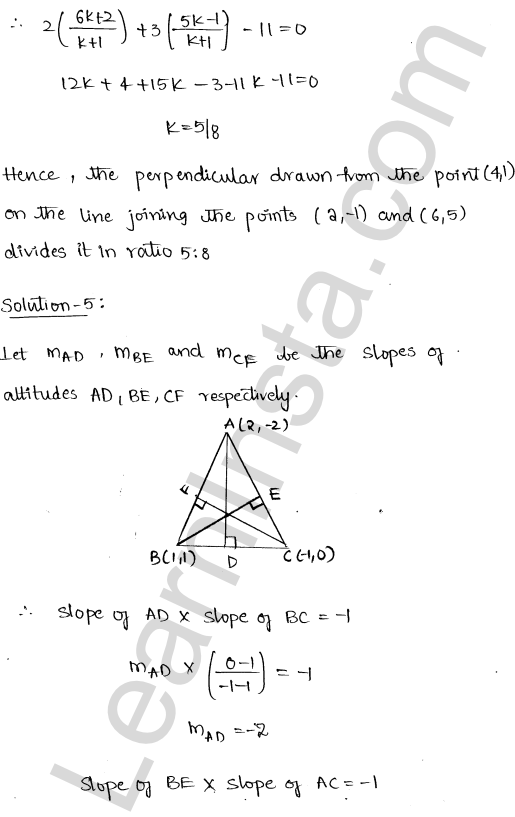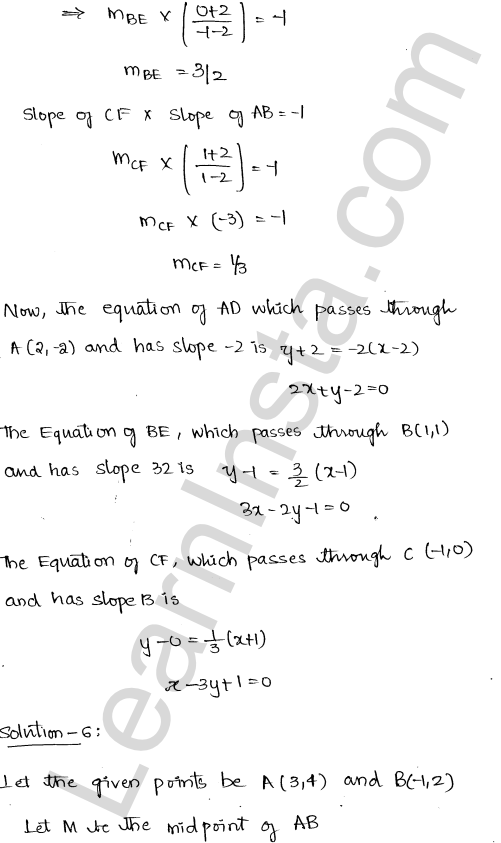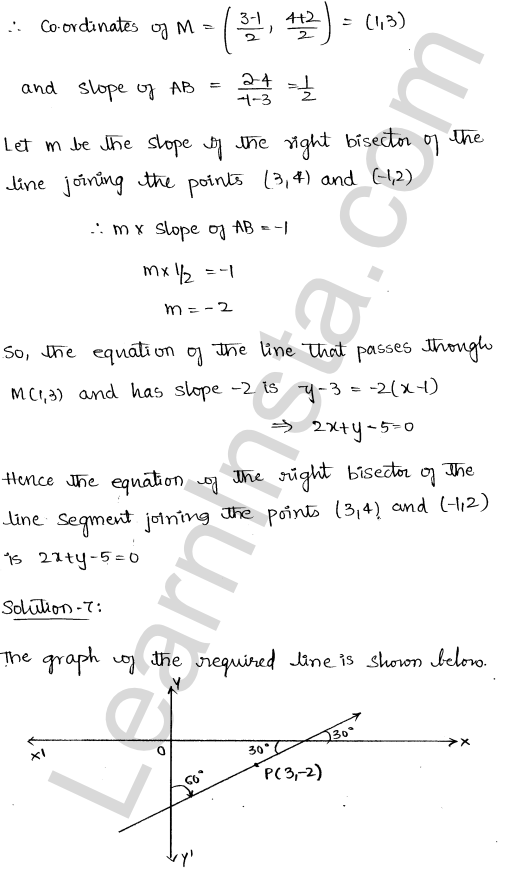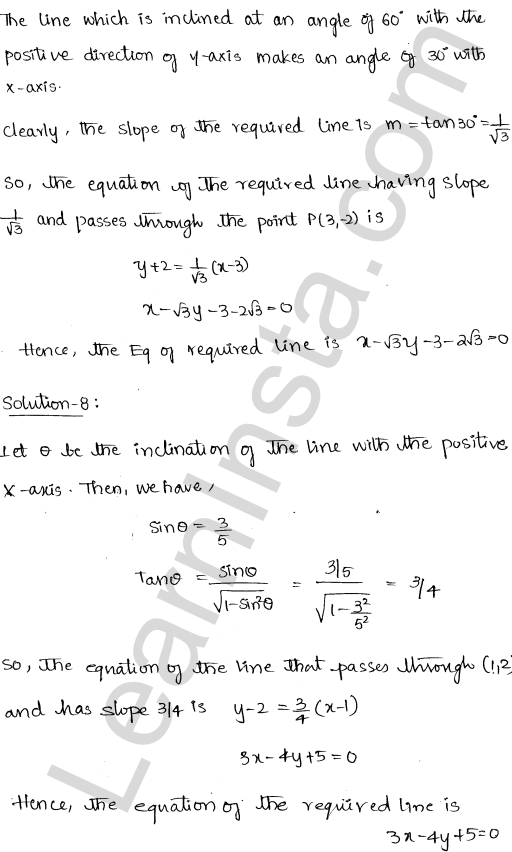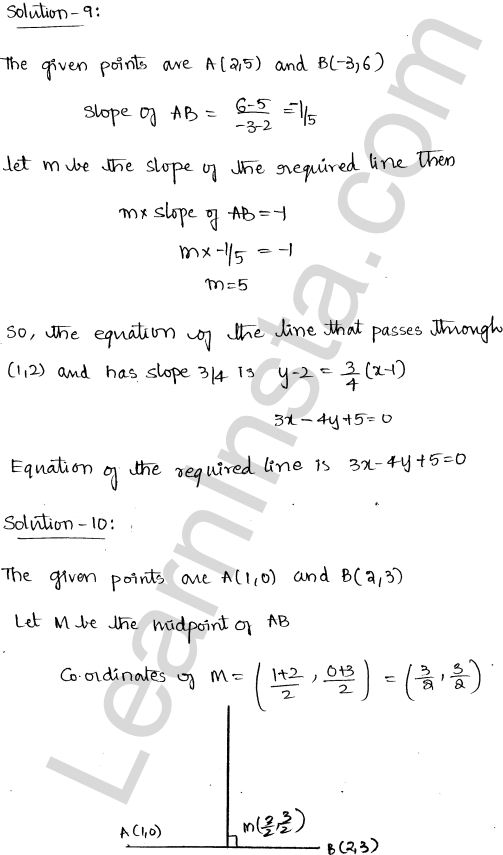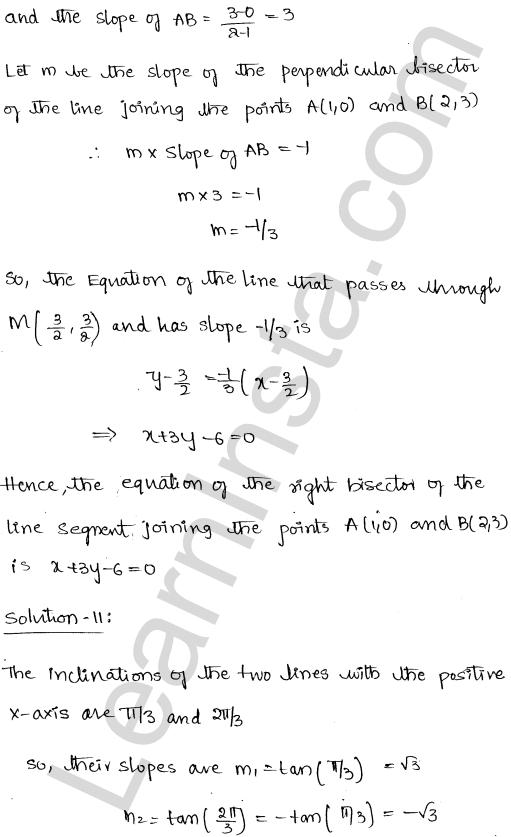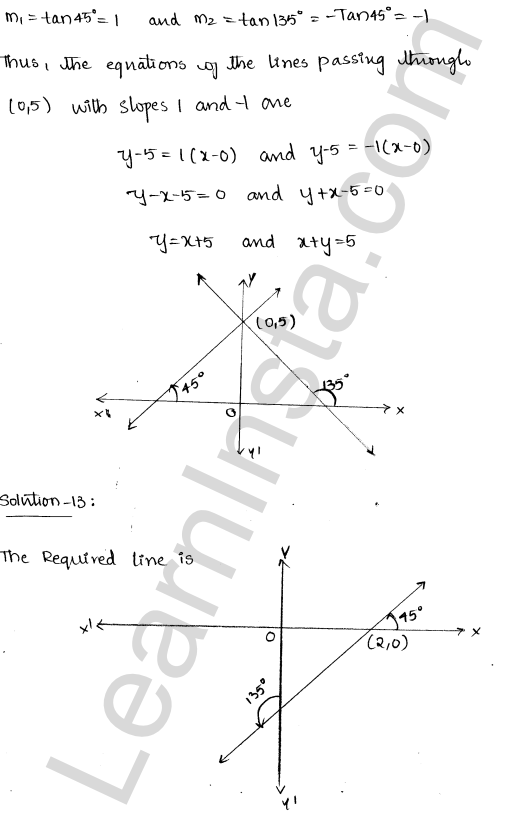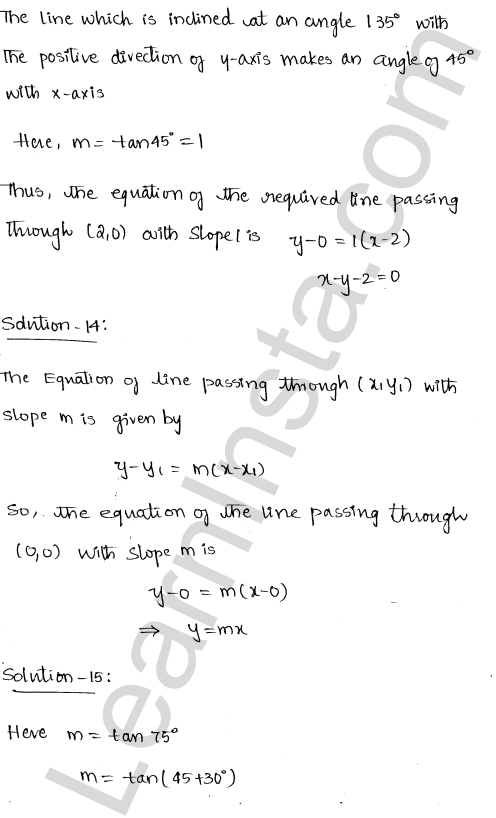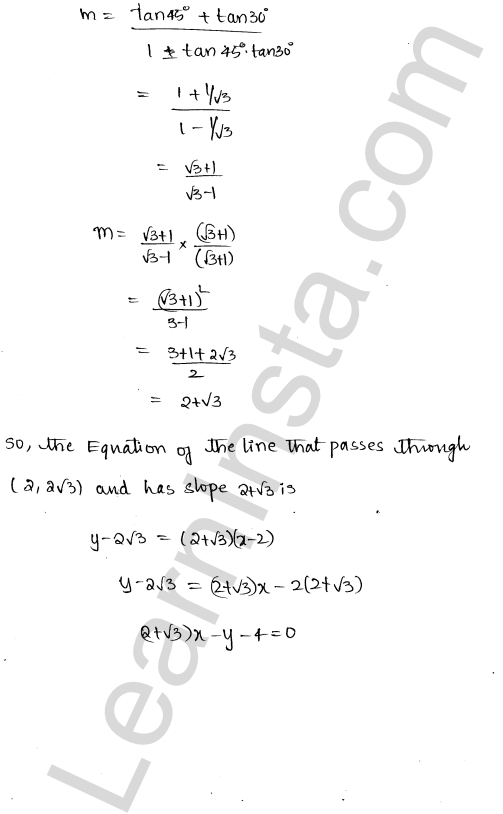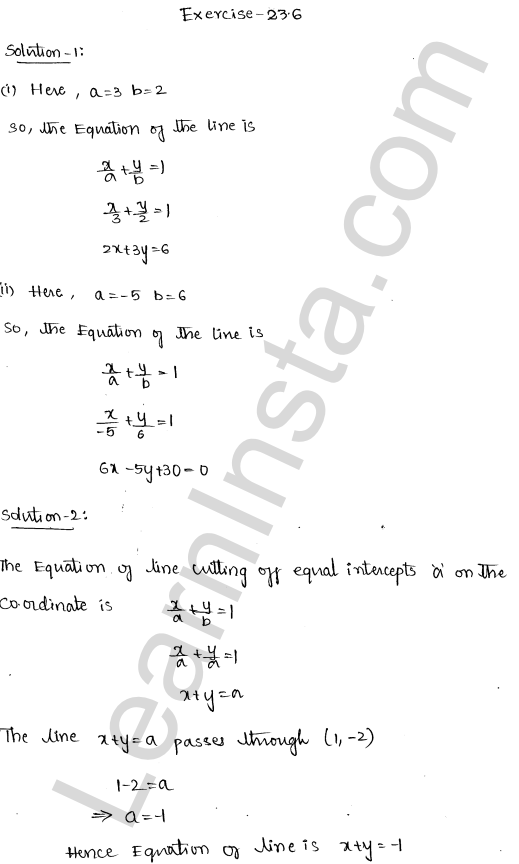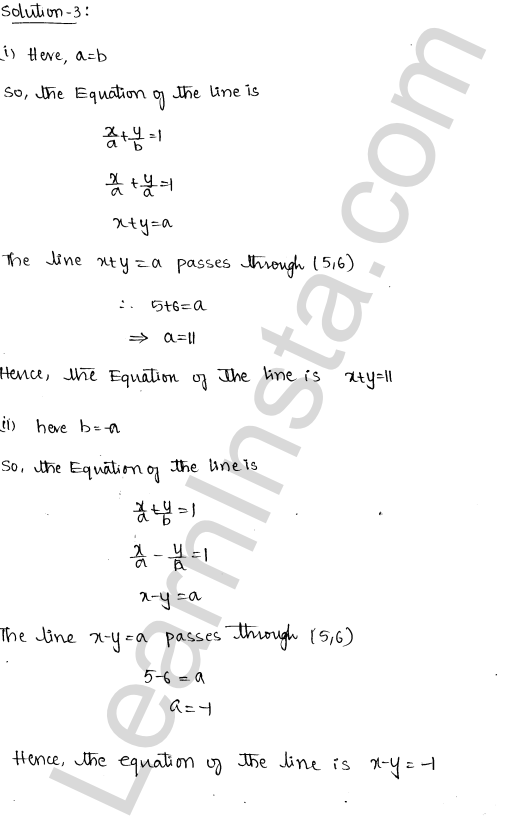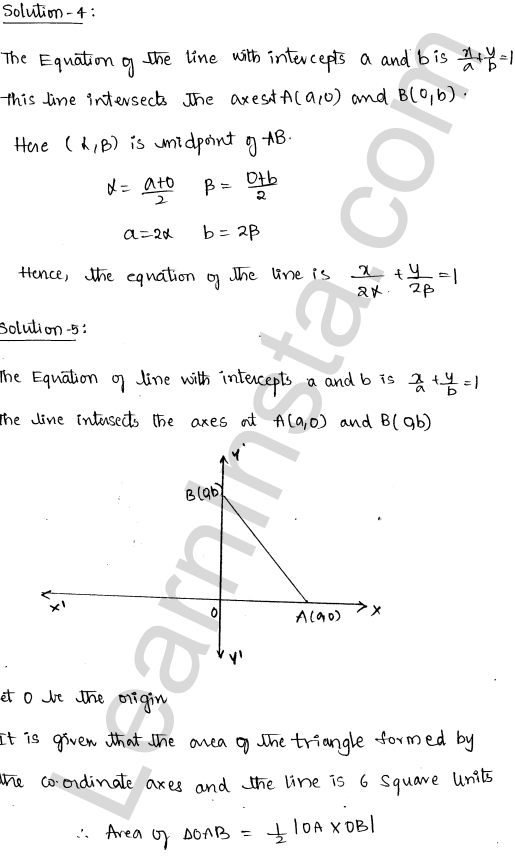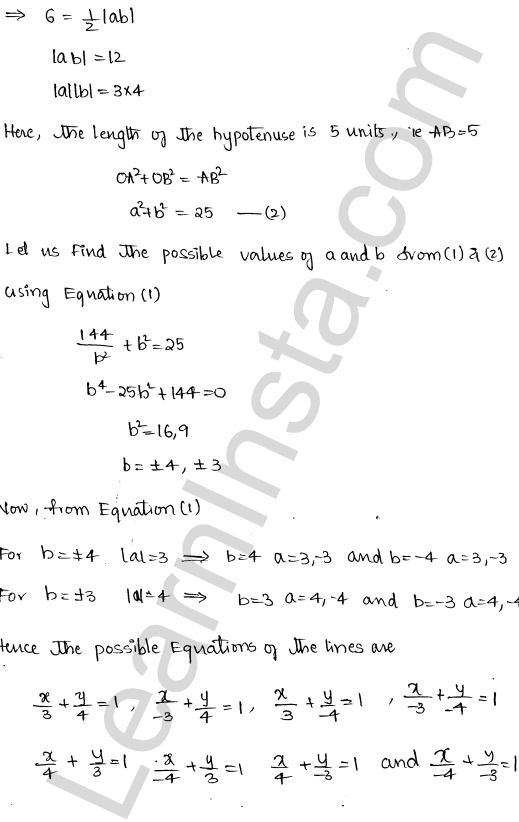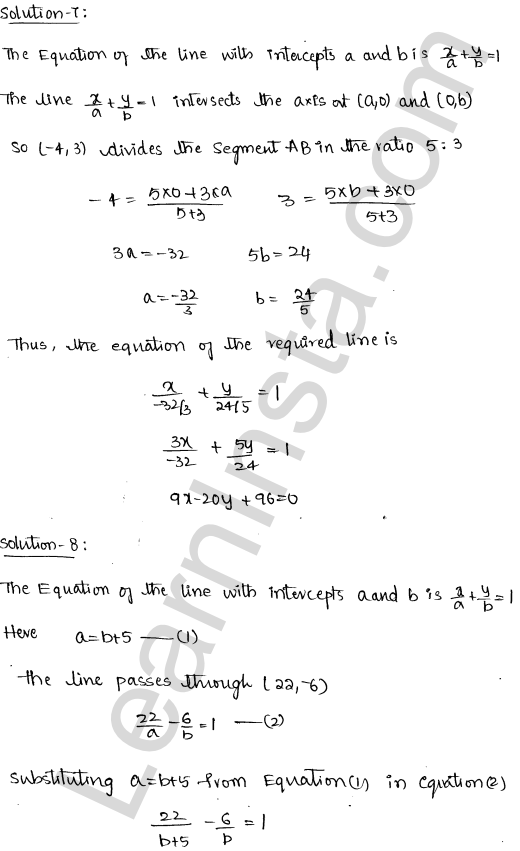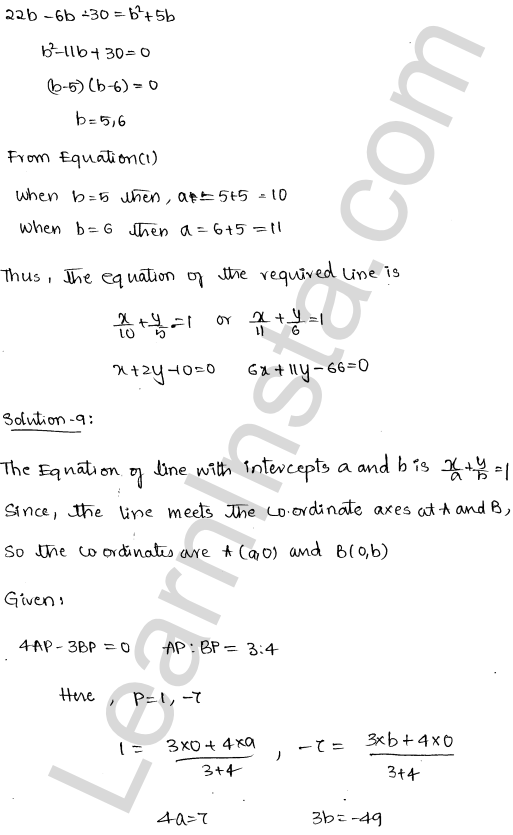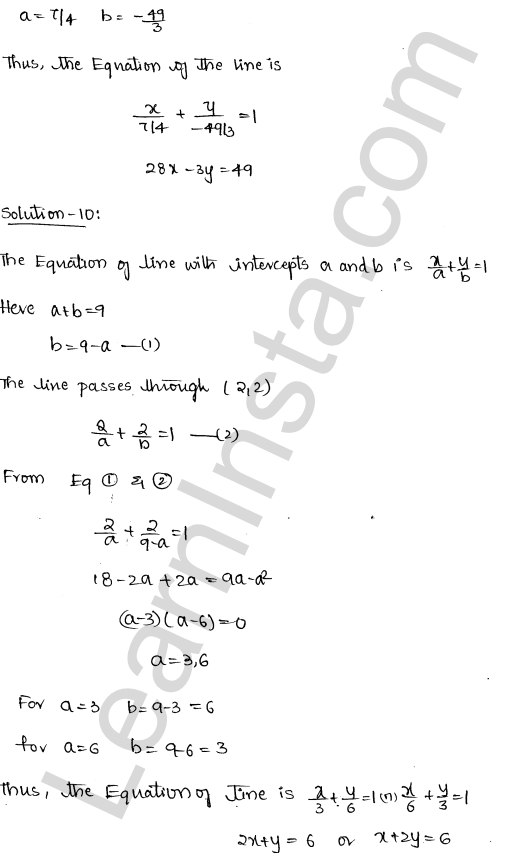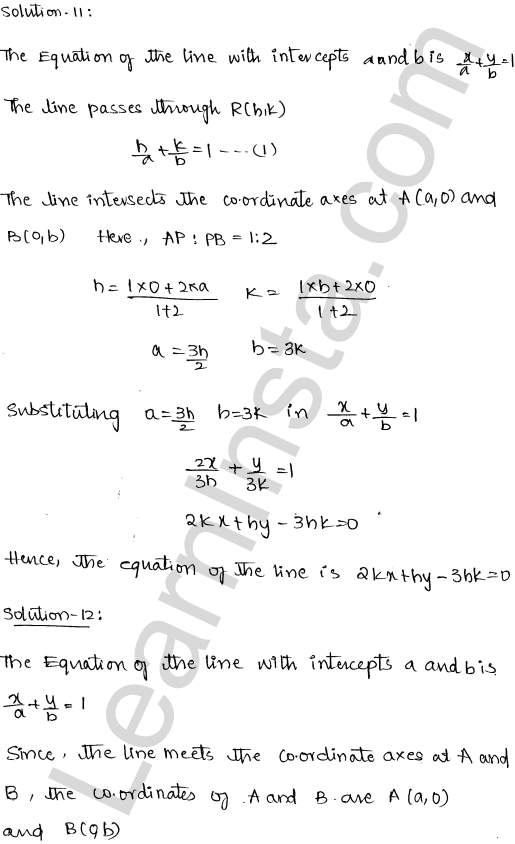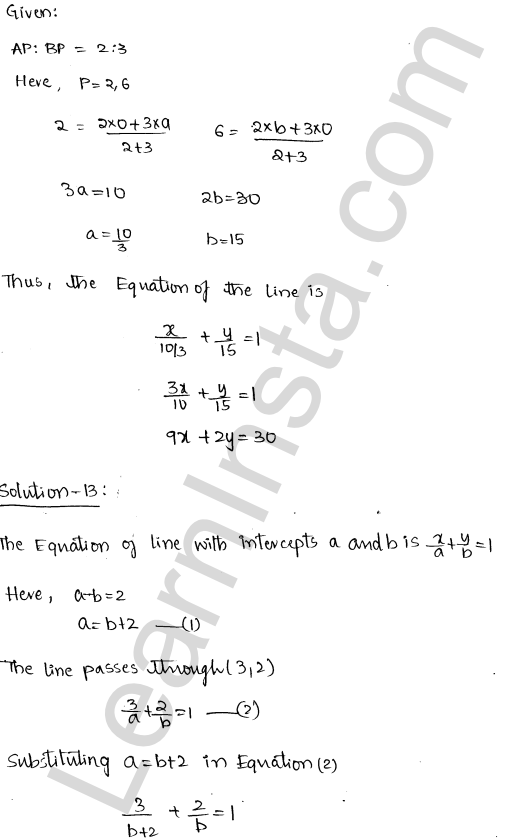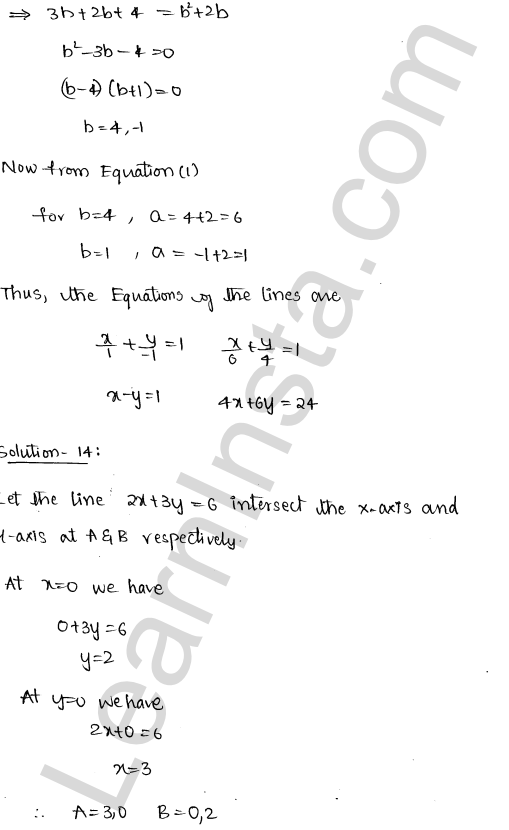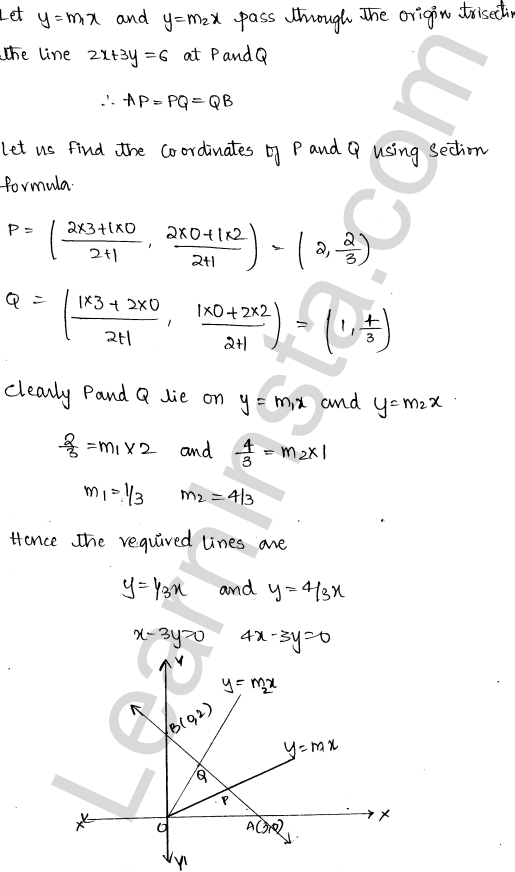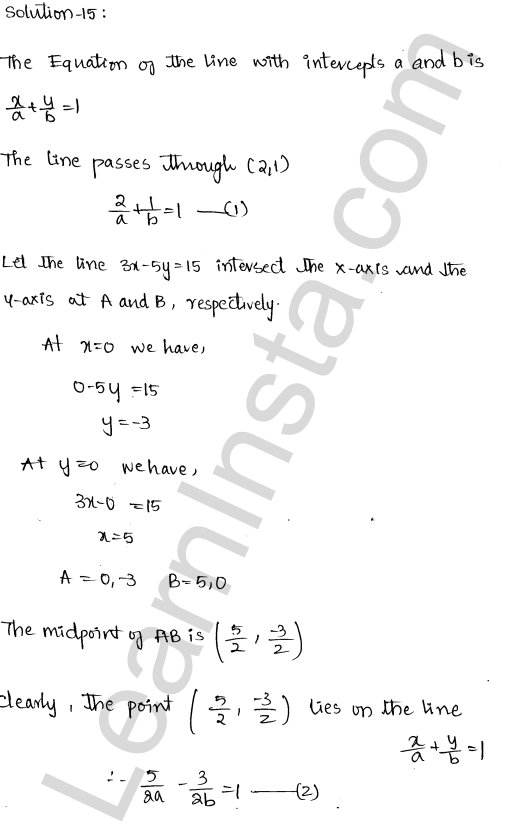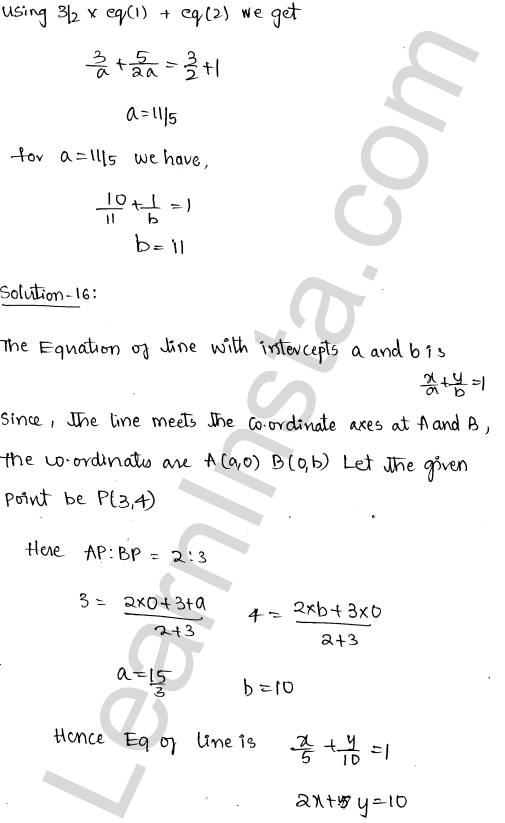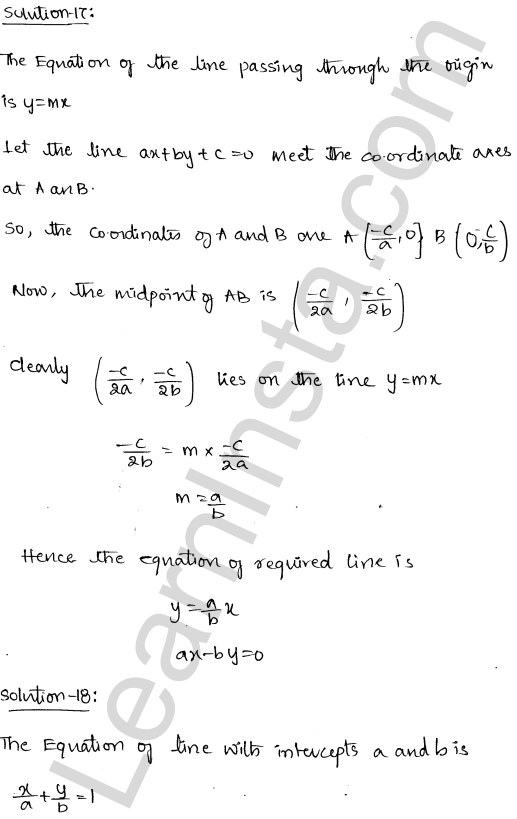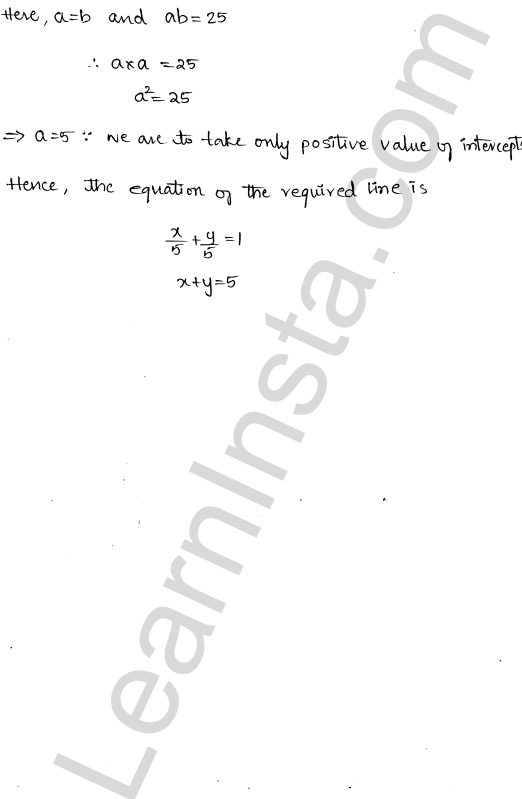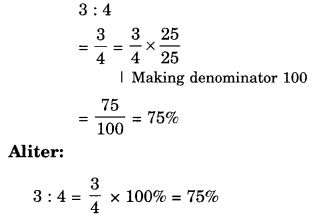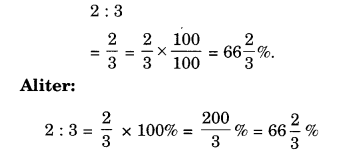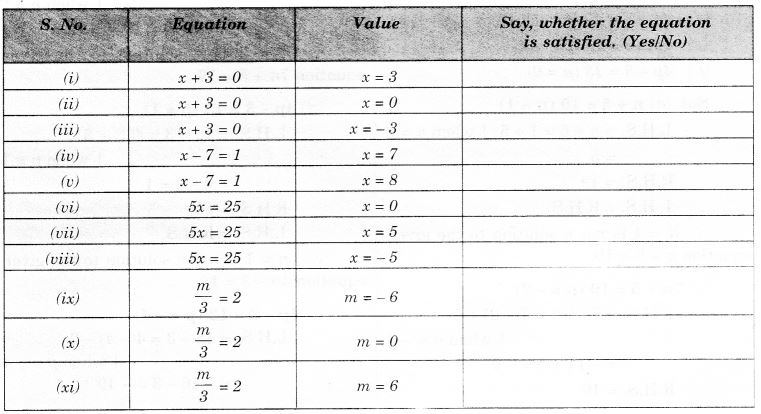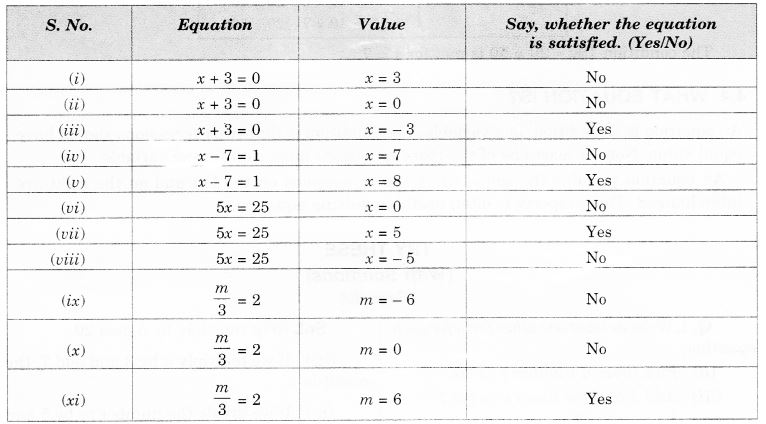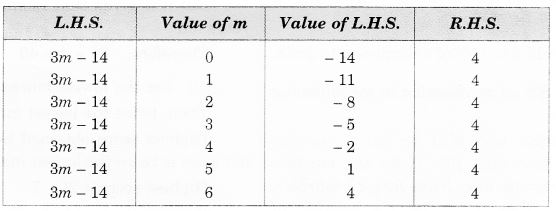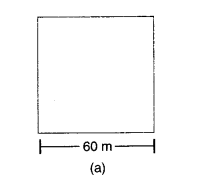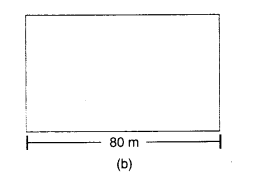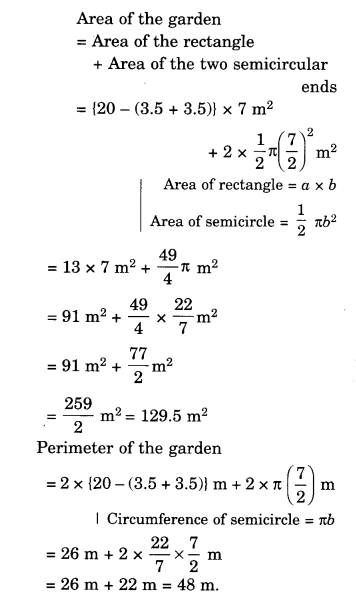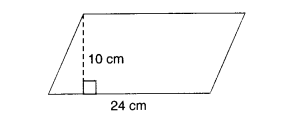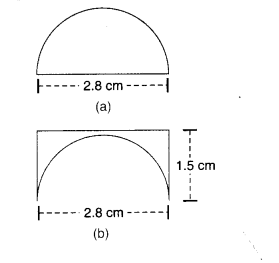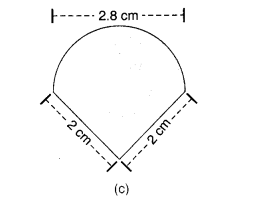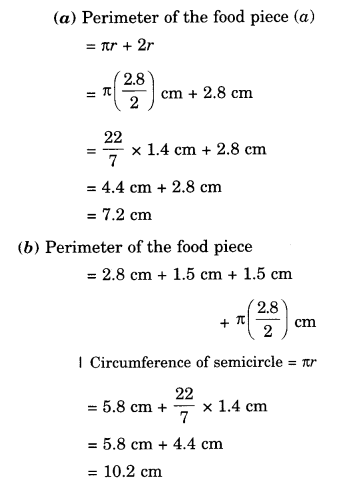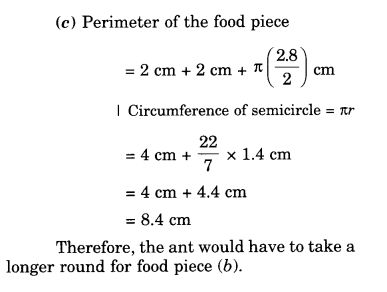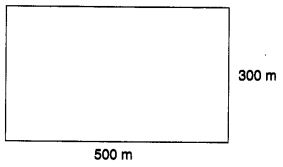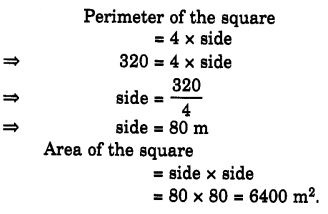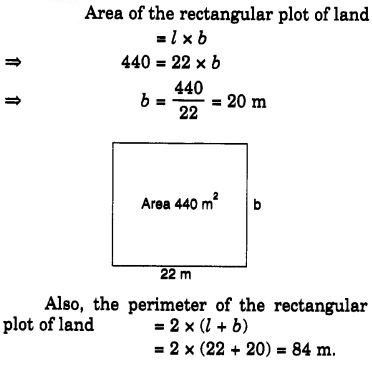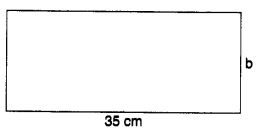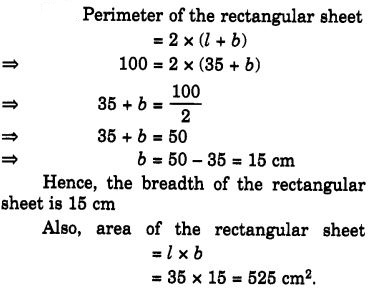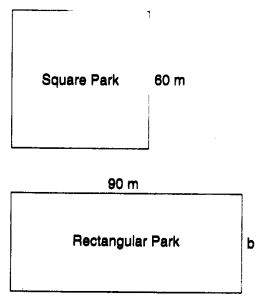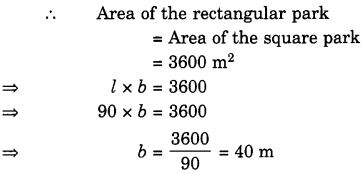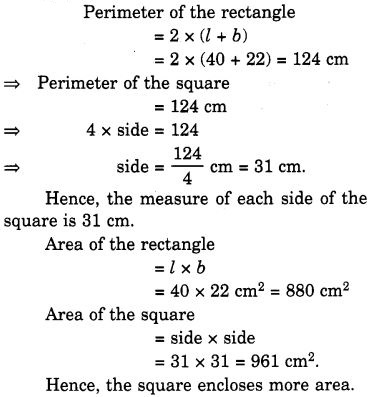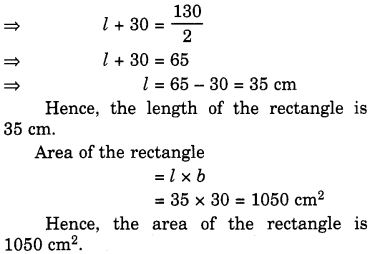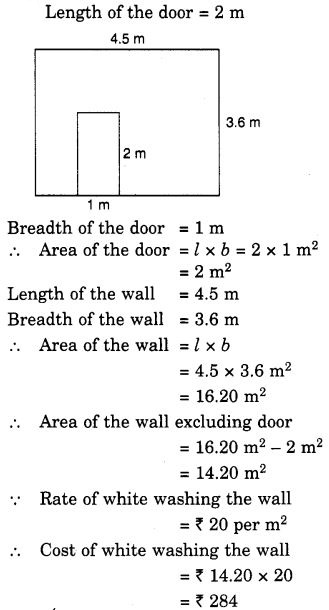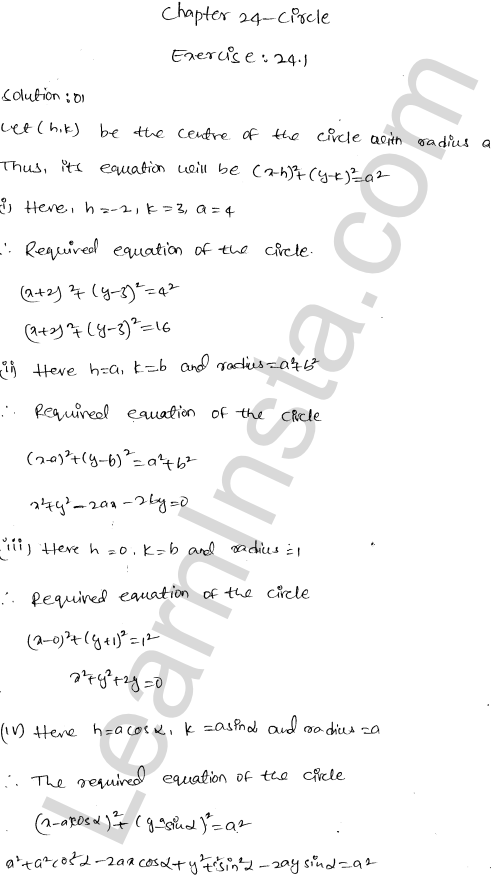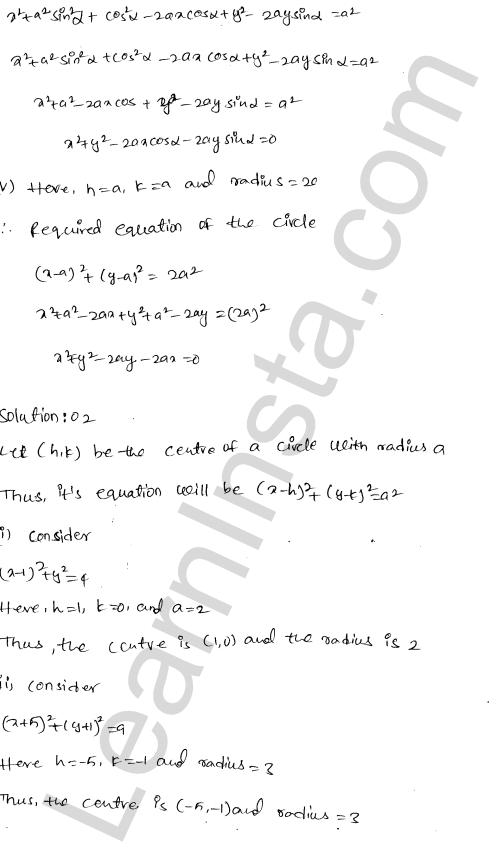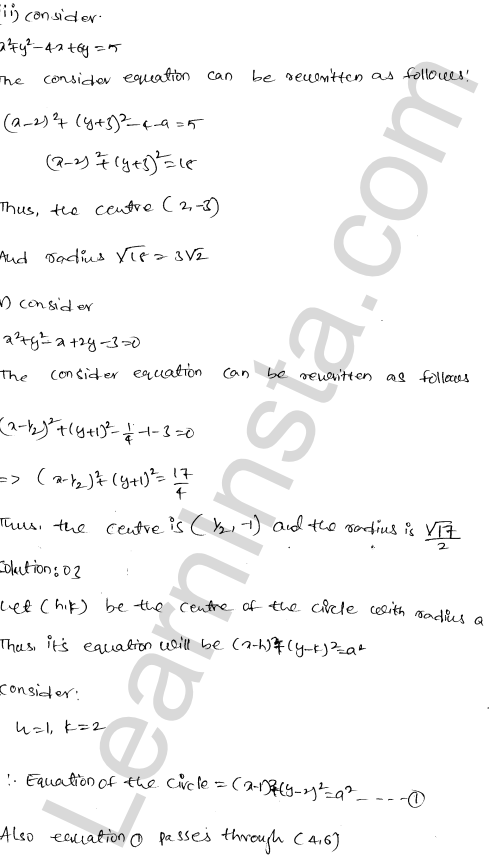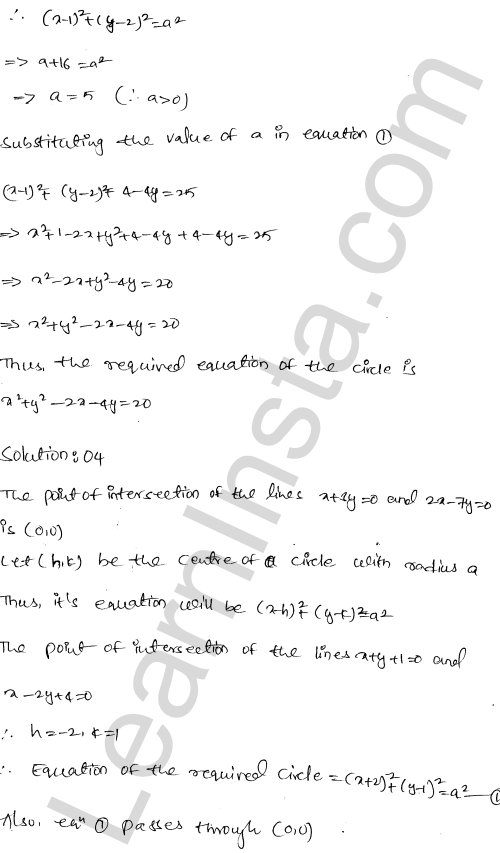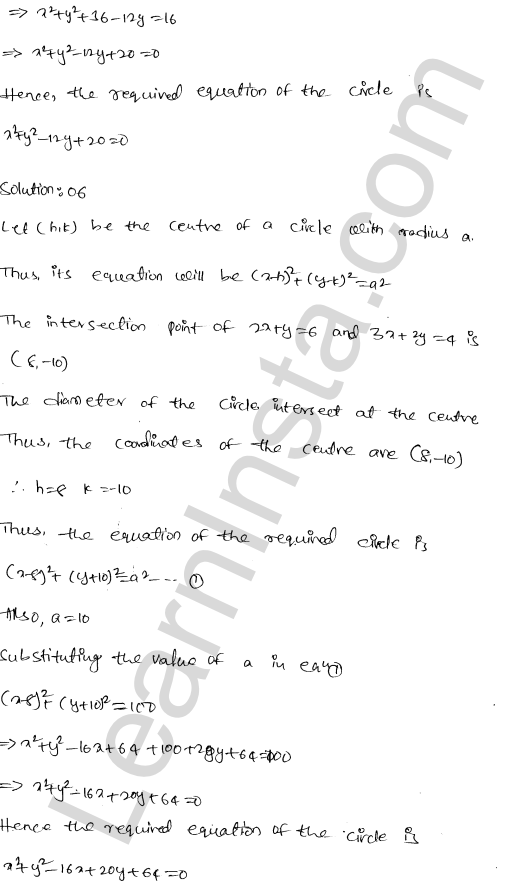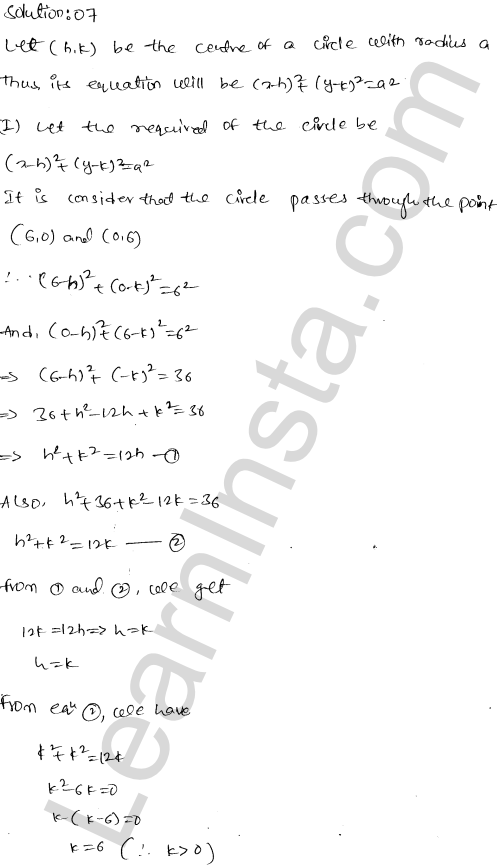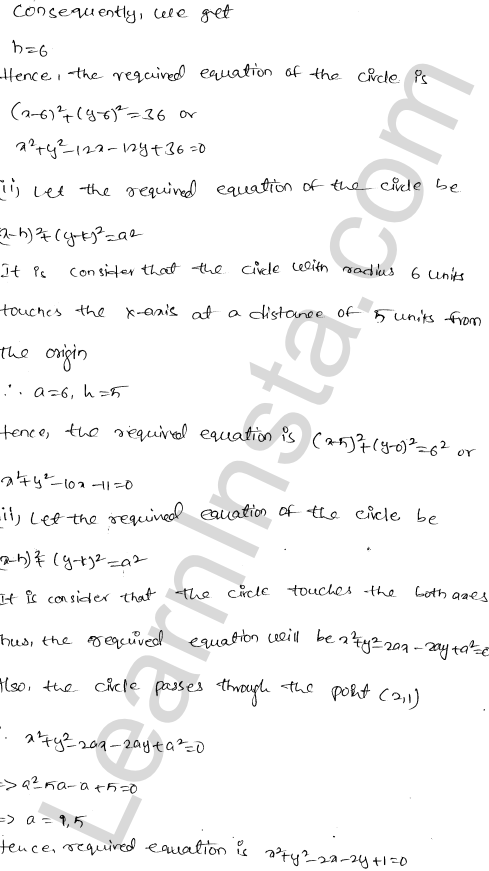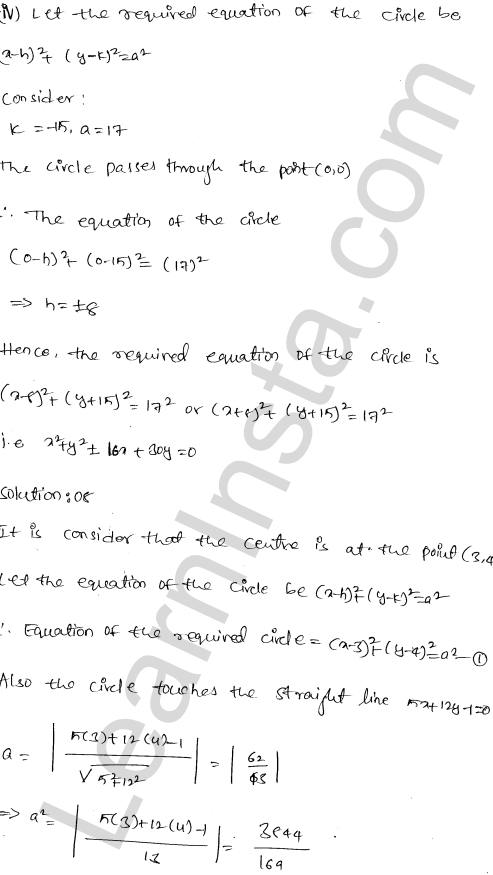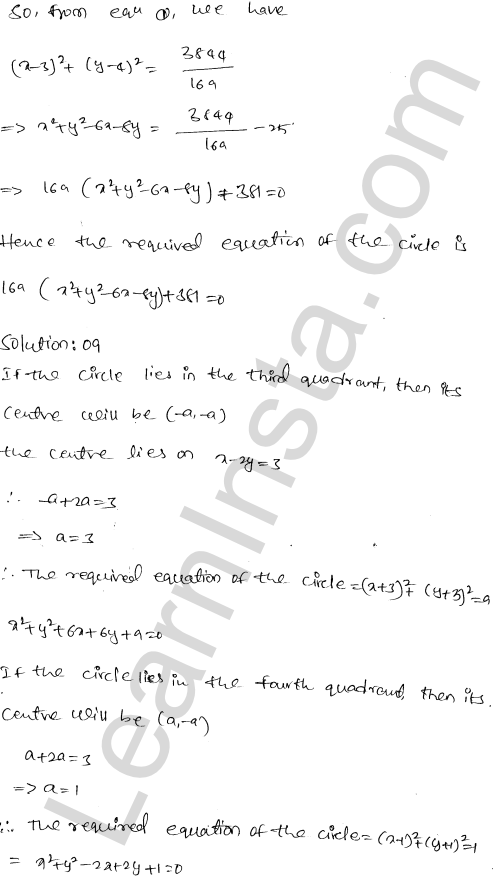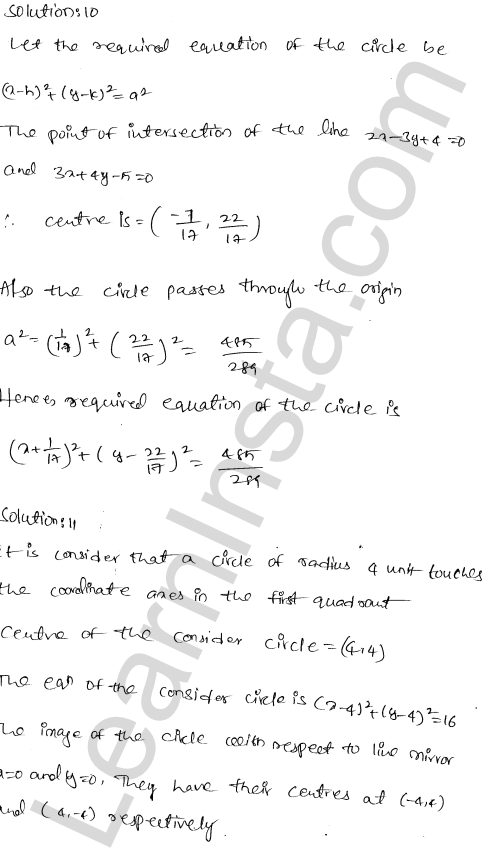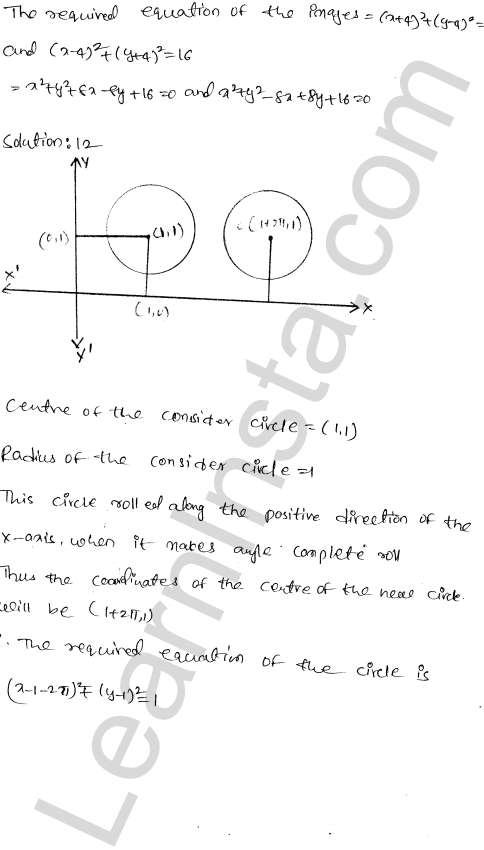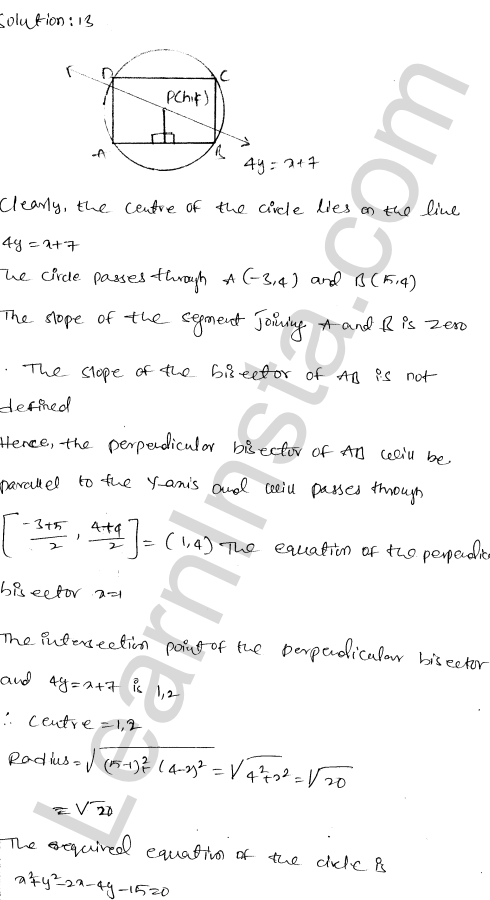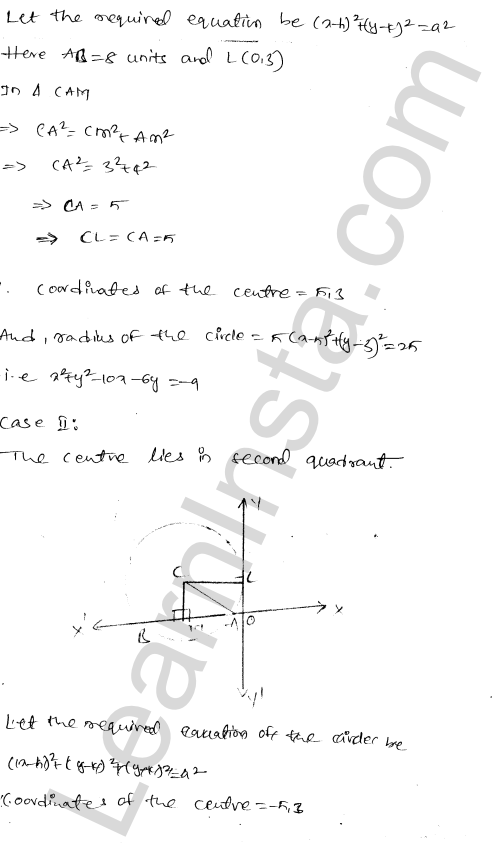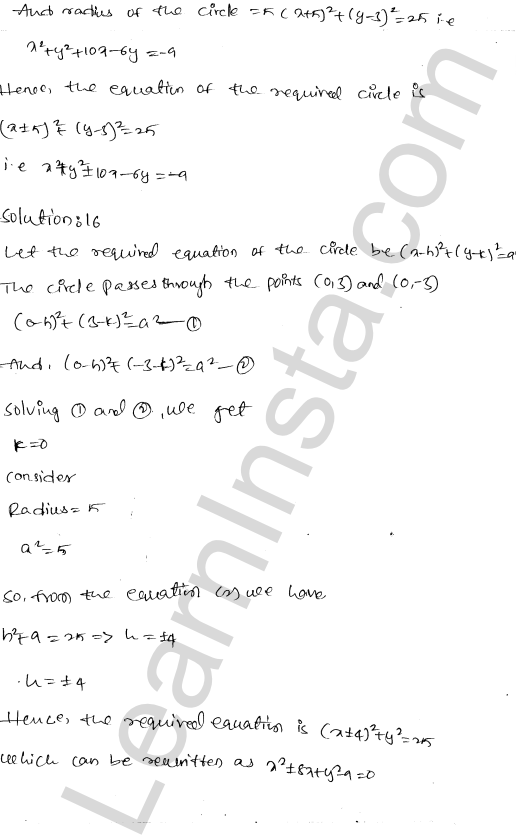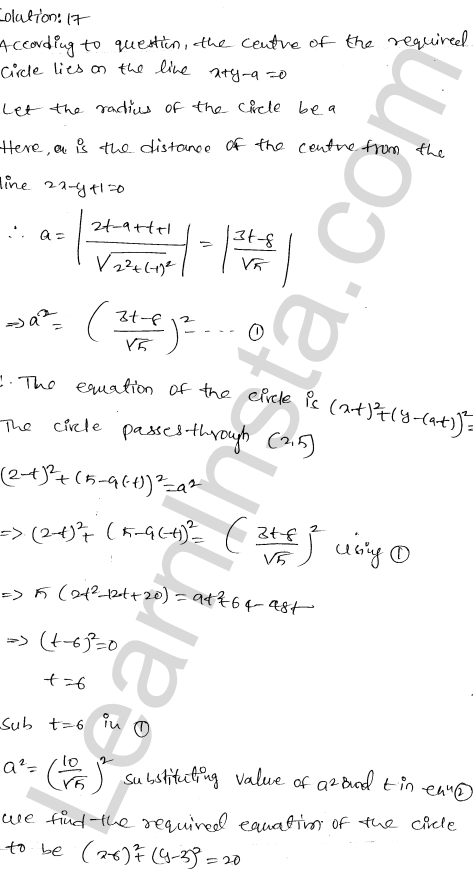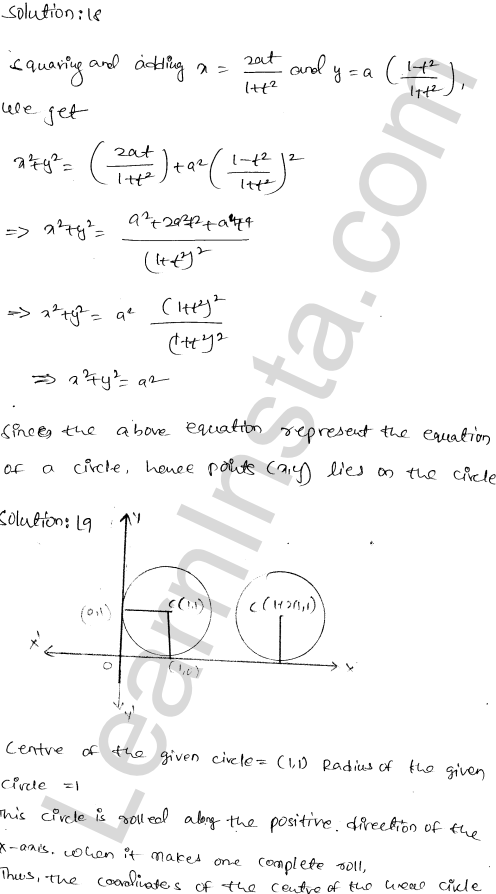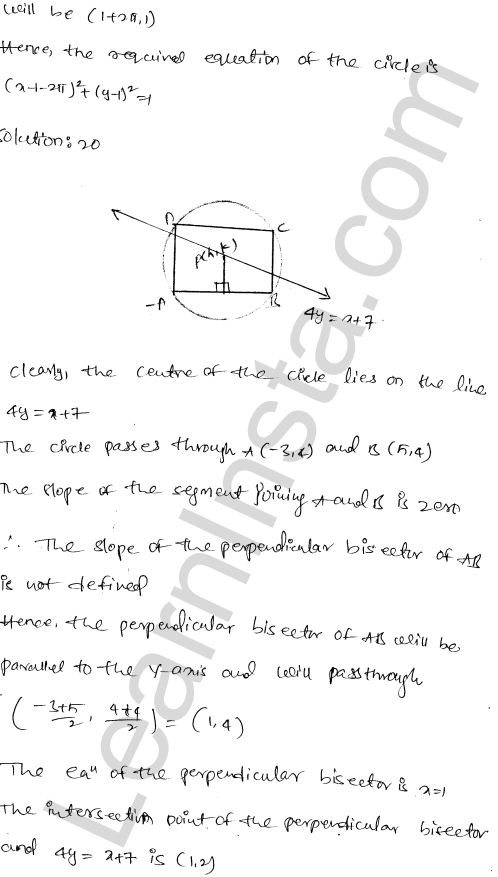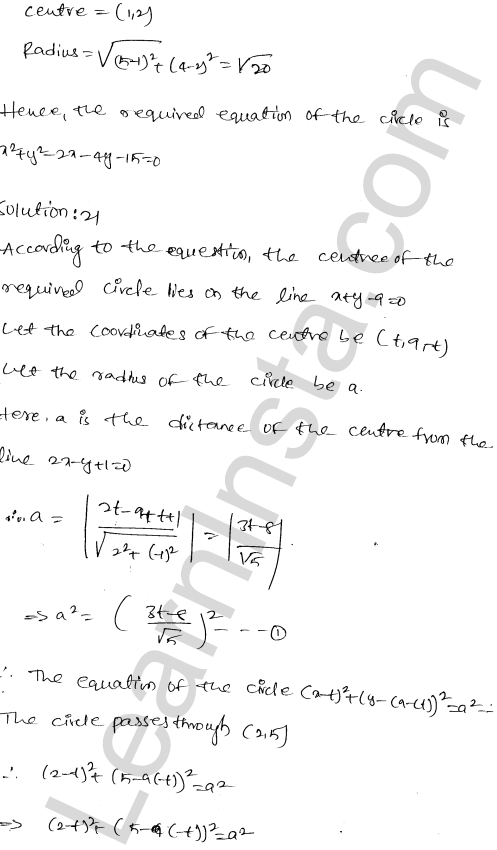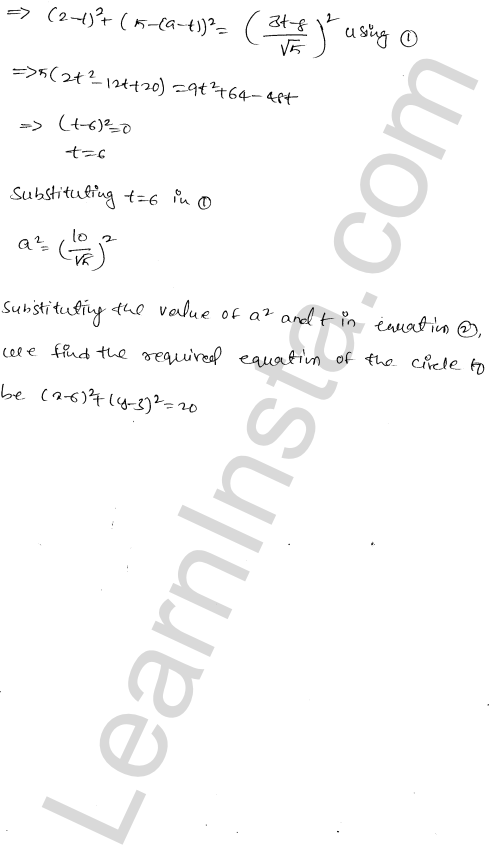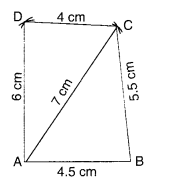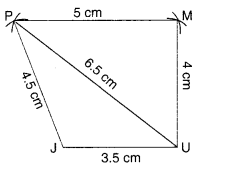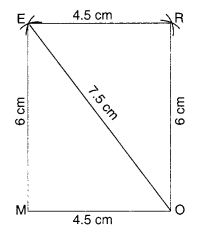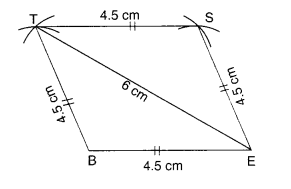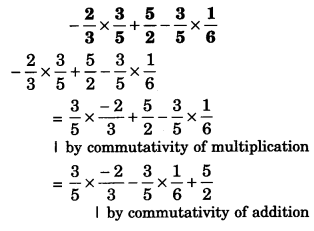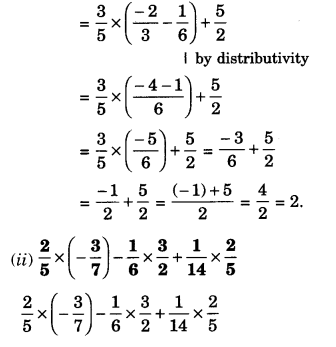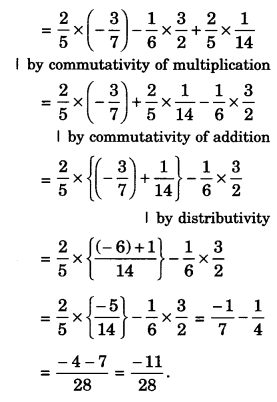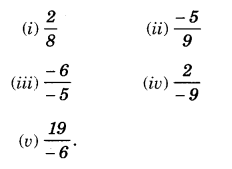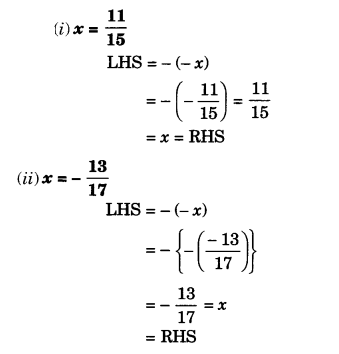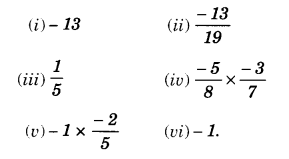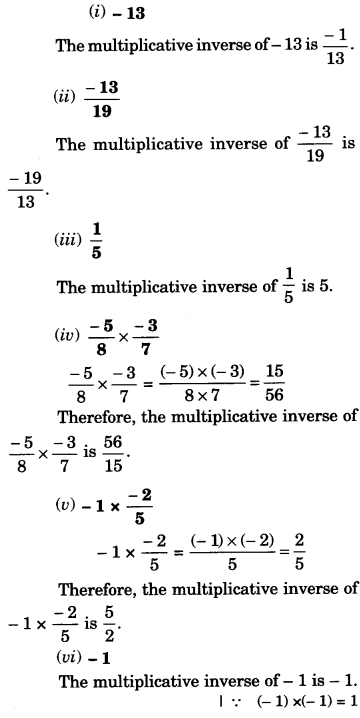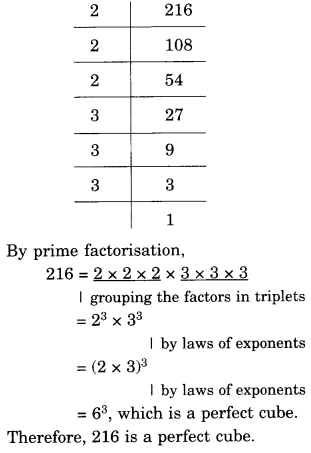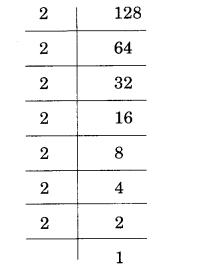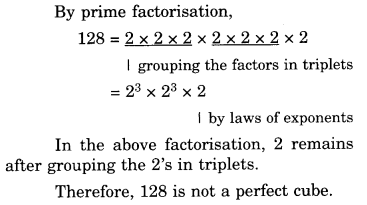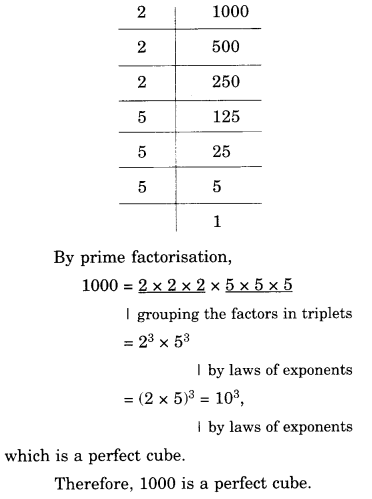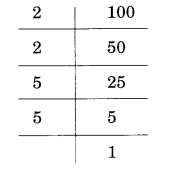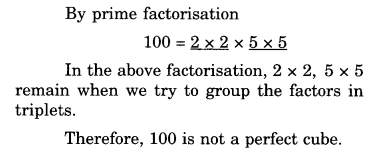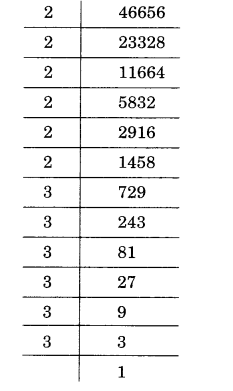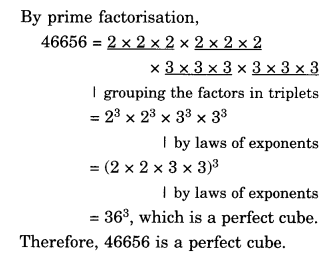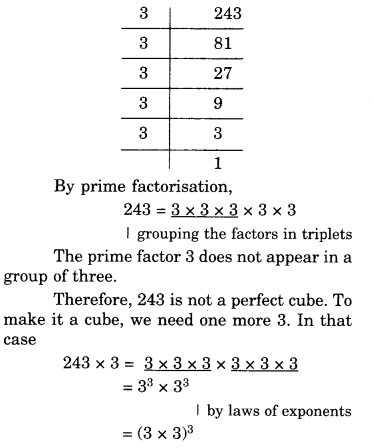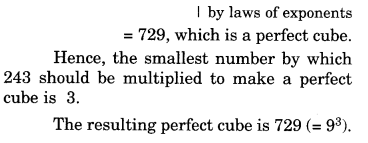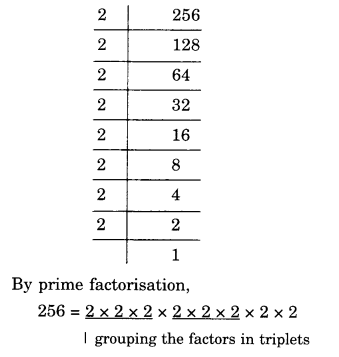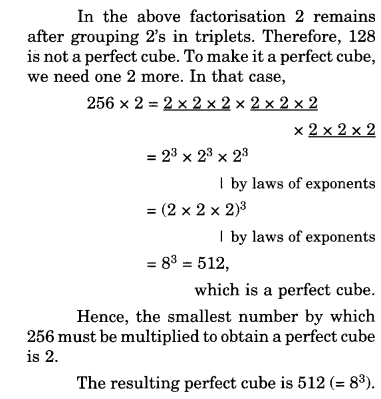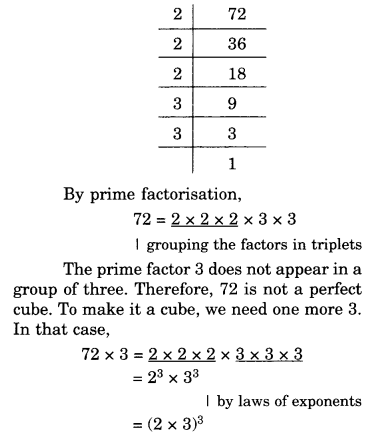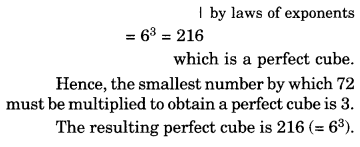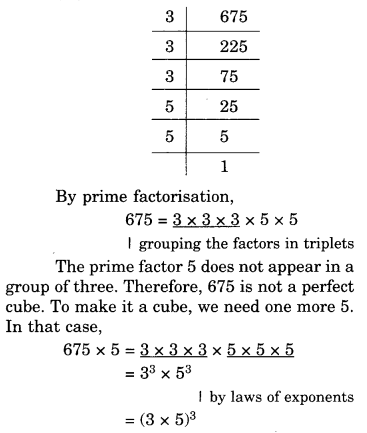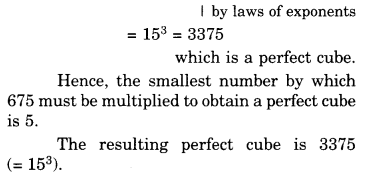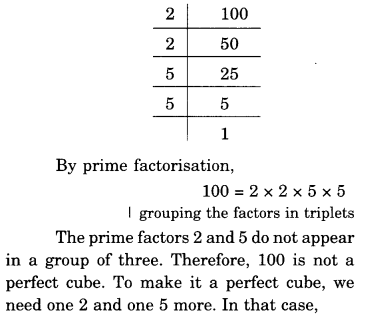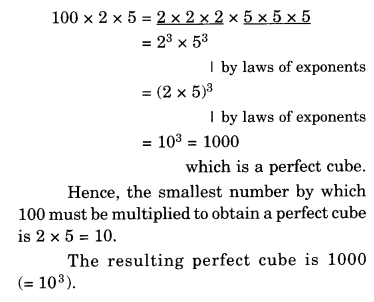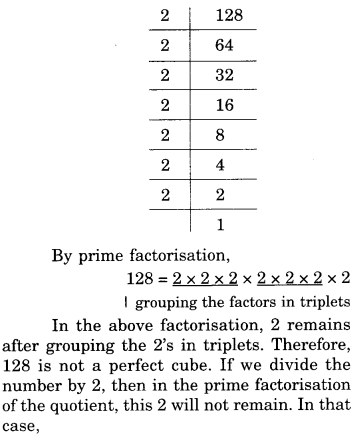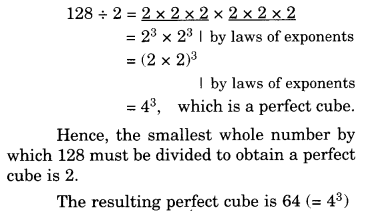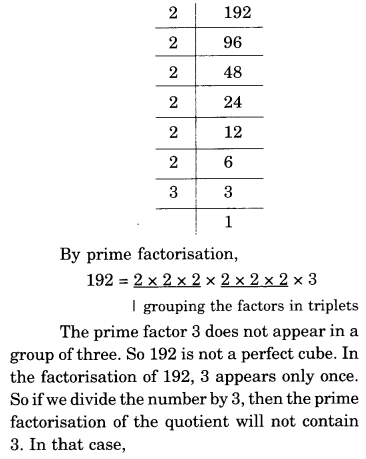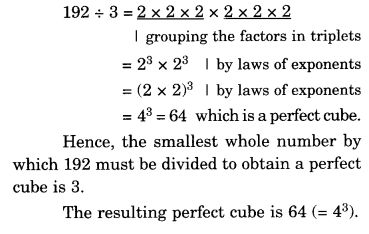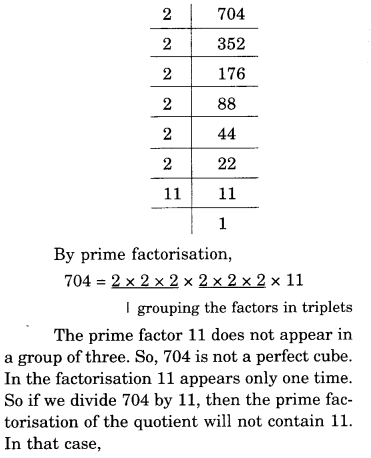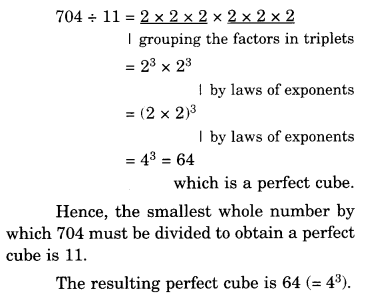CBSE Sample Papers for Class 9 Hindi A Paper 4 are part of CBSE Sample Papers for Class 9 Hindi A Here we have given CBSE Sample Papers for Class 9 Hindi A Paper 4.
CBSE Sample Papers for Class 9 Hindi A Paper 4
| Board | CBSE |
| Class | IX |
| Subject | Hindi A |
| Sample Paper Set | Paper 4 |
| Category | CBSE Sample Papers |
Students who are going to appear for CBSE Class 9 Examinations are advised to practice the CBSE sample papers given here which is designed as per the latest Syllabus and marking scheme, as prescribed by the CBSE, is given here. Paper 4 of Solved CBSE Sample Papers for Class 9 Hindi A is given below with free PDF download solutions.
समय : 3 घंटे
पूर्णांक : 80
निर्देश
- इस प्रश्न-पत्र के चार खंड हैंक, ख, ग और घ।
- चारों खंडों के प्रश्नों के उत्तर देना अनिवार्य है।
- यथासंभव प्रत्येक खंड के उत्तर क्रमशः दीजिए।
खंड {क} अपठित बोध [ 15 अंक ]
प्रश्न 1.
निम्नलिखित गद्यांश को ध्यानपूर्वक पढ़कर पूछे गए प्रश्नों के उत्तर लगभग 20 शब्दों में दीजिए
हमारे जीवन में उत्साह का विशेष स्थान है। किसी काम को करने के लिए सदा तैयार रहना तथा उस काम को करने में आनंद अनुभव करना उत्साह का प्रमुख लक्षण है। उत्साह कई प्रकार का होता है, परंतु सच्चा उत्साह वही होता है, जो मनुष्य को कार्य करने के लिए प्रेरणा दे। मनुष्य किसी भी कारणवश जब किसी के कष्ट को दूर करने का संकल्प करता है, तब जिस सुख को वह अनुभव करता है वह सुख विशेष रूप से प्रेरणा देने वाला होता है। इसी उत्साह के लिए कहा भी गया है, ‘साहस से भरी हुई उमंग ही उत्साह है। जिस कार्य को करने के लिए मनुष्य में कष्ट, दु:ख या हानि को सहन करने की ताकत आती है, उन सबसे उत्पन्न आनंद ही उत्साह कहलाता है। दान देने वाला व्यक्ति अपने भीतर एक विशेष साहस रखता है और वह है धन-त्याग का साहस। यही त्याग यदि मनुष्य प्रसन्नता के साथ करता है, तो उसे उत्साह से किया गया दान कहा जाएगा। इसी प्रकार, युद्ध-क्षेत्र में वीरती दिखाने वाले तथा दया के लिए वीरता दिखाने वाले भी अपने-अपने क्षेत्र में उत्साह का कार्य करने वाले हैं।
(क) उत्साह के लक्षण को स्पष्ट कीजिए।
(ख) कार्य करने की प्रेरणा देना क्या कहलाता है? स्पष्ट कीजिए।
(ग) उत्साह से आप क्या समझते हैं? स्पष्ट कीजिए।
(घ) “वीरता’ का विपरीतार्थक शब्द लिखिए।
(ङ) गद्यांश का उचित शीर्षक लिखिए।
प्रश्न 2.
निम्नलिखित काव्यांश को ध्यानपूर्वक पढ़कर पूछे गए प्रश्नों के उत्तर लगभग 20 शब्दों में दीजिए
सबसे तेज़ बौछार गईं भादों गया सवेरा हुआ
खरगोश की आँखों जैसा लाल सवेरा
शरद आया पुलों को पार करते हुए।
अपनी नई चमकीली साइकिल तेज़ चलाते हुए
घंटी बजाते हुए जोर-जोर से
चमकीले इशारों से बुलाते हुए
पतंग उड़ाने वाले बच्चों के झुंड को
चमकीले इशारों से बुलाते हुए और
आकाश को इतना मुलायम बनाते हुए
कि पतंग ऊपर उठ सके
दुनिया की सबसे हल्की और रंगीन चीज़ उड़ सके
दुनिया का सबसे पतला कागज़ उड़ सके
बाँस की सबसे पतली कमान उड़ सके
कि शुरू हो सके सीटियों, किलकारियों और
तितलियों की इतनी नाज़ुक दुनिया
जन्म से ही वे अपने साथ लाते हैं कपास
पृथ्वी घूमती हुई आती है उनके बेचैन पैरों के पास जब
वे दौड़ते हैं बेसुधे
छतों को भी नरम बनाते हुए।
(क) कवि ने प्रातःकाल के सवेरे को किसके समान बताया है? स्पष्ट कीजिए।
(ख) पतंग की क्या विशेषता बताई गई है?
(ग) काव्यांश में कौन-सी ऋतु के आने का वर्णन किया गया है?
(घ) “तितलियों की नाजुक दुनिया”-पंक्ति से कवि का क्या आशय है?
(ङ) “घंटी बजाते हुए जोर-जोर से”-पंक्ति में कौन-सा अलंकार है?
खंड {ख} व्याकरण [ 15 अंक ]
प्रश्न 3.
निर्देशानुसार उत्तर दीजिए
(क) ‘अति’ उपसर्ग किस शब्द में प्रयुक्त नहीं है?
(i) अत्यंत
(ii) अध्यात्म
(iii) अत्यधिक
(iv) अत्याचार
(ख) ‘बिन’ उपसर्ग से दो शब्दों का निर्माण करें।
(ग) “आई’ प्रत्यय से दो शब्दों का निर्माण करें।
(घ) ‘जागीरदार’ में प्रत्यय और मूल शब्द अलग कीजिए।
प्रश्न 4.
निम्नलिखित समस्त पदों का विग्रह करके समास का नाम लिखिए।
(क) गुरुभक्ति
(ख) सतसई
(ग) निस्संदेह
प्रश्न 5.
निर्देशानुसार उत्तर दीजिए
(क) संकेतवाचक वाक्य को सोदाहरण परिभाषित करें।
(ख) विधिवाचक वाक्य में बदलिए
(i) अपने देश के लिए कौन भारतीय प्राण नहीं दे सकता।
(ii) क्या आपने मेरी कॉपी लौटा दी?
प्रश्न 6.
निम्नलिखित काव्यांशों में निहित अलंकारों की पहचान कीजिए
(क) रती-रती सोभा सब रती के सरीर की।
(ख) पृथ्वी और भी तेज़ घूमती हुई आती है।
(ग) कूकै लगी कोइलें कदंबन पै बैठि फेरी।
(घ) देखि सुदामा की दीन दशा करुणा करके करुणानिधि रोए। पानी परात कौ हाथ छुऔ नहिं नैनन के जल सौं पग धोए।
खंड {ग} पाठ्यपुस्तक व पूरक पुस्तक [ 30 अंक ]
प्रश्न 7.
निम्नलिखित गद्यांश को ध्यानपूर्वक पढ़कर पूछे गए प्रश्नों के उत्तर लगभग 20 शब्दों में दीजिए
डाँडे तिब्बत में सबसे ख़तरे की जगह है। सोलह-सत्रह हज़ार फीट की ऊँचाई होने के कारण उसके दोनों तरफ़ मीलों तक कोई गाँव-गिराँव नहीं होते। नदियों के मोड़ और पहाड़ों के कोनों के कारण बहुत दूर तक आदमी को देखा नहीं जा सकता। डाकुओं के लिए यही सबसे अच्छी जगह है। तिब्बत में गाँव में आकर खून हो जाए, तब तो खूनी को सज़ा भी मिल सकती है, लेकिन इन निर्जन स्थानों में मरे हुए आदमियों के लिए कोई परवाह नहीं करता। सरकार, खुफ़िया-विभाग और पुलिस पर उतना खर्च नहीं करती और वहाँ गवाह भी तो कोई नहीं मिल सकता। डकैत पहले आदमी को मार डालते हैं, उसके बाद देखते हैं कि कुछ पैसा है कि नहीं। हथियार का कानून न रहने के कारण यहाँ लाठी की तरह लोग पिस्तौल, बंदूक लिए फिरते हैं। डाकू यदि जान से ने मारे तो खुद उसे अपने प्राणों का खतरा है। गाँव में हमें मालूम हुआ कि पिछले ही साल थोङला के पास खुन हो गया। शायद खून की हम उतनी परवाह नहीं करते, क्योंकि हम भिखमंगे थे और जहाँ-कहीं वैसी सूरत देखते, “टोपी उतार जीभ निकाल, ‘कुची-कुची (दया-दया) एक पैसा’ कहते भीख माँगने लगते।”
(क) तिब्बत में किस स्थान को सबसे खतरनाक बताया गया है। और क्यों?
(ख) डाँडे को डाकुओं के लिए सबसे अच्छा स्थान क्यों कहा गया है?
(ग) “टोपी उतार जीभ निकाल, कुची-कुची (दया-दया) एक पैसा’ कहते भीख माँगने लगते।’-पंक्ति के आधार पर लेखक के विषय में बताइए।
प्रश्न 8.
निम्नलिखित प्रश्नों के उत्तर लगभग 20 शब्दों में दीजिए
(क) प्रेमचंद को देखते ही लेखक की दृष्टि कहाँ टिक गई और उसने क्या-क्या अनुमान लगाए?
(ख) “कोई अपने जिस्म की हरारत और दिल की धड़कन देकर भी उसे लौटाना चाहे तो वह पक्षी अपने गीत दोबारा कै गा सकेगा।” ‘साँवले सपनों की याद’ पाठ के आधार पर आशय स्पष्ट कीजिए।
(ग) “दो बैलों की कथा’ पाठ के आधार पर सिद्ध कीजिए कि ‘संगठन में बल’ या ‘एकता में शक्ति होती है।
(घ) “लंदन के मंत्रिमंडल की यह मत है कि नाना का स्मृति-चिह्न तक मिटा दिया जाए।” आपकी दृष्टि में नाना का स्मृति-चिह्न मिटाने के पीछे अंग्रेज़ों की क्या मानसिकता रही होगी?
प्रश्न 9.
निम्नलिखित काव्यांश को ध्यानपूर्वक पढ़कर पूछे गए प्रश्नों के उत्तर लगभग 20 शब्दों में दीजिए
क्या सारे मैदान, सारे बगीचे और घरों के आँगन
खत्म हो गए हैं एकाएक
तो फिर बचा ही क्या है इस दुनिया में?
कितना भयानक होता अगर ऐसा होता
भयानक है, लेकिन इससे भी ज़्यादा यह
कि हैं सारी चीजें हस्बमामूल
पर दुनिया की हज़ारों सड़कों से गुजरते हुए
बच्चे, बहुत छोटे-छोटे बच्चे
काम पर जा रहे हैं।
(क) “कितना भयानक होता अगर ऐसा होता”-पंक्ति में किस ओर संकेत किया गया है?
(ख) दुनिया की हज़ारों सड़कों से गुज़रते हुए कौन काम पर जा रहे
(ग) कवि के अनुसार सारे मैदान, बगीचे और घरों के आँगन को क्या हो गया है?
प्रश्न 10.
निम्नलिखित प्रश्नों के उत्तर लगभग 20 शब्दों में दीजिए
(क) चंद्र गहना से लौटती बेर’ कविता में ‘बाँझ ज़मीन’ का वर्णन करते हुए कवि क्या कहना चाहता है?
(ख) “मेघ आए’ कविता में मेघ रूपी मेहमान के आने से वातावरण में क्या परिवर्तन हुए?
(ग) कविता ‘कैदी और कोकिला’ के आधार पर पराधीन भारत की जेलों में दी जाने वाली यातनाओं को वर्णन कीजिए। (घ) रसखान के अनुसार गोपी के स्वयं को न संभाल पाने का क्या कारण था?
प्रश्न 11.
आपके विचार से ‘माटी वाली कहानी सरकार के सामने कौन-सी समस्या को लाकर खड़ा कर देती है? वर्णन कीजिए।
अथवा
“कुछ बातें दुनिया में ऐसी हैं, जो सिर्फ मर्दो के लिए हैं और ऊँची तालीम भी ऐसी चीज़ों में से एक है।” इस कथन से समाज की किस मानसिकता का परिचय मिलता है?
खंड {घ} लेखन [ 20 अंक ]
प्रश्न 12.
निम्नलिखित विषयों में से किसी एक विषय पर दिए गए संकेत बिंदुओं के आधार पर लगभग 200-250 शब्दों में एक निबंध लिखिए
(क) क्रिकेट की बढ़ती लोकप्रियता
संकेत बिंदु
- प्रस्तावना
- क्रिकेट का आकर्षण
- क्रिकेट का रोमांच
- लोकप्रियता के कारण
- उपसंहार
प्रश्न 13.
आप वन महोत्सव के अवसर पर अपने नगर में वृक्षारोपण करना चाहते हैं। नगर के उद्यान विभाग के अधिकारी को पत्र लिखकर पौधों की व्यवस्था करने के लिए अनुरोध कीजिए।
अथवा
ग्रीष्मावकाश में पर्वतीय यात्रा के दौरान आप कुछ दिन के लिए अपने मित्र के घर ठहरे, जहाँ आपका बहुत आदर-सत्कार हुआ। मित्र के प्रति आभार प्रकट करते हुए एक पत्र लिखिए।
प्रश्न 14.
आप अनिमेष हैं तथा आपकी छोटी बहन काम्या का स्वास्थ्य खराब है। उसे डॉक्टर को दिखाते हुए लगभग 50 शब्दों में संवाद लिखिए।
अथवा
अध्यापिका व अभिभावक के मध्य होते संवाद को लगभग 50 शब्दों में लिखिए।
जवाब
उत्तर 1.
(क) किसी कार्य को करने के लिए सदैव तत्पर रहना तथा उस कार्य को करने में आनंद अनुभव करना ही उत्साह का प्रमुख लक्षण है।
(ख) कार्य करने की प्रेरणा देना ‘सच्चा उत्साह’ कहलाता है। उत्साह अनेक प्रकार का होता है, परंतु सच्चा उत्साह वही होता है, जो मनुष्य को कार्य करने की प्रेरणा दे।
(ग) उत्साह वही होता है जो मनुष्य को कार्य करने की प्रेरणा दे। अतः जिस कार्य को करने के लिए मनुष्य में कष्ट, दुःख या हानि को सहन करने की शक्ति आती है, उन सबसे उत्पन्न आनंद ही उत्साह कहलाता है।
(घ) ‘वीरता’ का विपरीतार्थक शब्द ‘कायरता’ है।
(ङ) गद्यांश का उचित शीर्षक उत्साह का महत्त्व’ ही होगा।
उत्तर 2.
(क) कवि ने प्रातः काल के सवेरे को खरगोश की आँखों जैसा लाल बताया है। यह प्रातः काल सवेरा शरद ऋतु का है, इस समय आसमान सूर्योदय के कारण खरगोश की आँखों की भाँति लाल चमक रहा है और यह अपने चमकीले इशारों से बच्चों को अनेक खेलों के लिए आमंत्रित करता है।
(ख) पतंग को कवि दुनिया की सबसे हल्की एवं रंगीन वस्तु कहता है, जो सबसे पतले कागज़ और सबसे पतली कमानी से बनी हुई है और जो आसमान में बच्चों के द्वारा उड़ाई जाती है।
(ग) काव्यांश में शरद ऋतु के आने का वर्णन किया गया है, क्योंकि भादों के महीने की तेज़ बौछारों वाली वर्षा का मौसम बीत गया।
(घ) “तितलियों की नाजुक दुनिया”- पंक्ति से कवि का आशय आसमान में उड़ती रंग-बिरंगी पतंगों से है। बच्चे पतंग को आसमान में उड़ाना व इसके माध्यम से स्वयं उड़ना चाहते हैं। पतंग यहाँ बच्चों की बालसुलभ इच्छाओं का प्रतीक है।
(ङ) “घंटी बजाते हुए जोर-जोर से”-पंक्ति में पुनरुक्तिप्रकाश अलंकार है।
उत्तर 3.
(क) (ii) अध्यात्म
(ख) बिनबादल, बिनपाए
(ग) लिखाई, पढ़ाई
(घ) जागीर-मूल शब्द, दार-प्रत्यय
उत्तर 4.
(क) गुरु की भक्ति- तत्पुरुष (संबंध) समास यहाँ संबंध कारक चिह्न (की) का लोप होने से तत्पुरुष समास है, इसलिए यहाँ तत्पुरुष समास है।
(ख) सौ का समाहार – द्विगु तत्पुरुष समास यहाँ पूर्वपद (सत) संख्यावाचक है, इसलिए यहाँ द्विगु समास है।
(ग) बिना संदेह के- अव्ययीभाव समास यहाँ पूर्वपद अव्यय (निः) प्रधान है, इसलिए यहाँ अव्ययीभाव समास है।
उत्तर 5.
(क) ऐसे वाक्य जिनसे किसी प्रकार के संकेत या इशारे का बोध होता है, संकेतवाचक वाक्य कहलाते हैं। जैसे-जो परिश्रम करेगा, वही सफल होगा।
(ख) (i) अपने देश के लिए प्रत्येक भारतीय प्राण दे सकता है।
(ii) आपने मेरी कॉपी लौटा दी।
उत्तर 6.
(क) यमक अलंकार यहाँ रती शब्द तीन बार आया है। प्रथम रती-शोभा (सब रती के शरीर की) दूसरा रती-रत्ती और तीसरा रती-कामदेव की पत्नी–रति। अतः यहाँ यमक अलंकार है।
(ख) मानवीकरण अलंकार यहाँ ‘पृथ्वी आती है’ में मानवीकरण अलंकार है।
(ग) अनुप्रास अलंकार यहाँ ‘क’ वर्ण की आवृत्ति के कारण अनुप्रास अलंकार है।
(घ) अतिशयोक्ति अलंकार यहाँ सुदामा की दुर्दशा देखकर कृष्ण इतना रोए कि अपने आँसुओं से ही उन्होंने सुदामा के चरण धो दिए।.यहाँ आँसुओं से चरण धोने में अतिशयोक्ति पूर्ण वर्णन है। इसलिए यहाँ अतिशयोक्ति अलंकार है।
उत्तर 7.
(क) तिब्बत में डाँडे को सबसे खतरनाक स्थान बताया गया है, क्योंकि पहाड़ों पर अत्यंत ऊँचाई पर स्थित यह स्थान निर्जन था। इन निर्जन स्थानों में मरे हुए। व्यक्तियों की कोई परवाह नहीं करता था।
(ख) डाँडे को डाकुओं के लिए सबसे अच्छा स्थान दो कारणों से कहा गया है। पहला कारण यह है कि यह स्थान अत्यंत निर्जन अर्थात् एकांत था, जिससे डाकू यहाँ लूटपाट आसानी से कर लेते थे और दूसरी कारण यह है कि डाँडे में सुरक्षा व्यवस्था अत्यंत कमजोर थी, जिसके कारण डाकू यहाँ स्वतंत्र घूमते थे।
(ग) प्रस्तुत पंक्ति से लेखक के विषय में यह ज्ञात होता है। कि वह भिखारियों के वेश में यात्रा कर रहा था और वह परिस्थिति के अनुरूप अपने इस वेश का उचित लाभ भी उठाता था।
उत्तर 8.
(क) प्रेमचंद को देखते ही लेखक की दृष्टि उनके फटे जूते पर ही टिकी रह गई और वह सोचने लगा कि फोटो खिंचवाने की यदि यह पोशाक है, तो पहनने वाली पोशाक कैसी होगी नहीं, इस आदमी की अलग-अलग पोशाकें नहीं होंगी, क्योंकि यदि होतीं तो वे फोटो खिंचाने के लिए अवश्य ही कोई ढंग की पोशाक पहनकर आते। इसलिए इनमें पोशाकें बदलने का गुण नहीं है। यह जैसे हैं, वैसे ही फोटो में दिखाई देते हैं।
(ख) इस कथन के माध्यम से लेखक बताना चाहता है कि सालिम अली की अब मृत्यु हो चुकी है। सालिम अली के सपने अपने थे, मौलिक थे।। किसी दूसरे के दिल की धड़कन और गरमाहट सालिम अली जैसे व्यक्ति के सपनों को पुनः जीवित नहीं कर सकती। अतः प्रयासपूर्वक भी सालिम अली जैसा पक्षी-प्रेमी उत्पन्न नहीं किया जा सकता।।
(ग) प्रस्तुत कहानी में गया से हीरा को मार खाता देखकर मोती ने हल, रस्सी आदि तोड़कर भागते हुए हीरा को बचा लिया। दोनों बैल मिलकर ही कांजीहौस की दीवार गिराकर पशुओं को स्वतंत्र करने में सफल हो पाए थे। साँड़ (उनसे बलशाली पशु) से भी दोनों ने संगठित होकर ही मुकाबला किया गया के अन्याय को दोनों ने मिलकर सहा। इस प्रकार यह सिद्ध होता है। कि संगठन में बल तथा एकता में शक्ति होती है।
(घ) 1857 ई. के विद्रोह में नाना साहब ने अंग्रेज़ी सरकार को बहुत नुकसान पहुँचाया था। उनके बहुत-से सैनिक मारे गए थे और बहुत-सी संपत्ति लूट ली गई थी। विद्रोह असफल होने पर नाना को स्मृति-चिह्न तक मिटाने के पीछे अंग्रेज़ों की मानसिकता यह रही होगी कि नाना साहब को सबके सिखाया जाए, ताकि भविष्य में कोई उनकी तरह कार्य करने का दुस्साहस न कर सके।
उत्तर 9.
(क) “कितना भयानक होता अगर ऐसा होता”-पंक्ति में कवि ने उस भयानक स्थिति की ओर संकेत किया है, जिसके अनुसार यदि सारे मैदान, सारे बगीचे और सारे घरों के आँगन समाप्त हो जाते।
(ख) दुनिया की हज़ारों सड़कों से गुज़रते हुए, बहुत छोटे-छोटे बच्चे काम पर जा रहे हैं। यह हमारे समय की सबसे भयंकर बात है कि जिस आयु में बच्चे का विकास होना चाहिए, उस आयु में बच्चे काम पर जाने के लिए विवश हैं।
(ग) कवि के अनुसार सारे मैदान, बगीचे और घरों के आँगन अचानक समाप्त हो गए हैं।
उत्तर 10.
(क) कवि ‘बाँझ जमीन’ का वर्णन करते हुए यह कहना चाहता है कि नगरों में हरियाली और प्राकृतिक सुंदरता समाप्त होती जा रही है। आज के व्यस्त शहरी जीवन में किसी के पास प्रकृति और हरियाली जैसी वस्तुओं की चिंता करने के लिए समय ही नहीं है। आज का व्यक्ति केवल उन बातों पर ध्यान देता है, जिससे उसे आर्थिक लाभ होता है।
(ख) मेघ रूपी मेहमान के आने पर वातावरण में यह परिवर्तन हुआ कि हवा के चलने के कारण वातावरण में ठंडक होने लगी। पेड़ों की डालियाँ ऊपर-नीचे होने लगीं तथा मुरझाई हुईं लताएँ वर्षा की संभावना से प्रसन्न हो गईं। तालाब पूरी तरह भर जाने की संभावना से आनंदित हो गए। कुछ ही देर में वहाँ पानी बरसने लगा और सारा वातावरण हरा-भरा हो गया। सभी प्राणी प्रसन्न हो उठे।
(ग) पराधीन भारत में कैदियों को कठोर यातनाएँ दी जाती थीं। स्वतंत्रता सेनानियों के लिए कोई अलग से व्यवस्था नहीं थी। उनके हाथों में भी हथकड़ियाँ डालकर अन्य बंदियों (जैसे चोरों, लुटेरों, राहजनों) के साथ रखा जाता था। कोठरी में अँधेरा होता था तथा भोजन भी भरपेट नहीं दिया जाता था। कई बार कोल्हू के बैल का कार्य भी स्वतंत्रता सेनानियों से ही कराया जाता था।
(घ) रसखान के अनुसार गोपी का स्वयं को न संभाल पाने का कारण यह था कि अनुपम सौंदर्य के स्वामी श्रीकृष्ण जब मुरली की मधुर धुन बजाते एवं मुस्कुराते हुए गोपियों को देखते थे, तब गोपियों द्वारा स्वयं को संभालना कठिन हो जाता था। यह कृष्ण के प्रति गोपियों के अनन्य प्रेम को दर्शाता है।
उत्तर 11.
‘माटी वाली कहानी में लेखक विद्यासागर नौटियाल ने ‘विस्थापन’ की समस्या को सरकार के सामने लाकर खड़ा कर दिया है। गरीब और श्रमिक वर्ग इस समस्या से निरंतर जूझता चला आ रहा है, लेखक ने इसका बहुत ही संवेदनशील और मार्मिक वर्णन किया है। , सरकार की किसी योजना (बाँध आदि) के क्रियान्वयन के परिणामस्वरूप अनेक लोगों को अपना स्थान छोड़कर दूसरे स्थान पर जाना पड़ता है। यही ‘विस्थापन’ कहलाता है। विस्थापन की समस्या के पीछे अनेक कारण होते हैं; जैसे-तूफान, बाढ़, भूकंप, बाँध या सरकार की कोई योजना। इसके कारण लोगों को बहुत परेशानियों का सामना करना पड़ता है, लोगों को अपने घर तथा रोज़गार को छोड़ना पड़ता है। लोगों का भविष्य अंधकारमय हो जाता है और जिनके पास उनके घर व खेत के कागज़ात नहीं होते, उनके लिए और अधिक समस्या उत्पन्न हो जाती है। उन्हें सरकार की ओर से कोई सहायता नहीं मिल पाती। वे सड़क पर आ जाते हैं। माटी वाली के सामने भी ऐसी ही समस्या आ खड़ी होती है।
अथवा
उक्त कथन ‘रीढ़ की हड्डी’ नामक पाठ में लड़के (शंकर) के पिता गोपाल प्रसाद द्वारा कहा गया है। इस कथन के द्वारा समाज की पुरुषवादी एवं पितृसत्तात्मक मानसिकता का परिचय मिलता है। इसी मानसिकता का परिणाम है कि स्त्री और पुरुषों के कार्यक्षेत्र में भिन्नता है और उसी 5 अनसार उनकी आवश्यकताएँ निर्धारित कर दी गई है। पढ़-लिखकर रोजगार प्राप्त करना तथा परे परिवार का भरण-पोषण करना परुषों की ज़िम्मेदारी मानी जाती है, जबकि प्रतिभासंपन्न स्त्रियाँ भी घर की चहारदीवारी में रहने को विवश हैं, क्योंकि उनका संसार घर तक ही। सीमित कर दिया गया है। पुरुष सदा से ही परिवार और समाज में हावी रहते आए हैं और सत्ता पर उनका अधिकार रहा है। इसी कारण उन्होंने समाज में अपनी सुविधानुसार ही नियम बनाए हैं और स्त्रियों को सदैव हाशिए पर रखा है। पूर्वकाल में स्त्रियों को शिक्षित करने की आवश्यकता भी अनुभव नहीं की जाती थी। पुरुष स्त्रियों को अपने हाथों की कठपुतली बनाकर रखते हैं और उनका विभिन्न प्रकार से शोषण करते हैं। समाज में व्याप्त यह पुरुषवादी मानसिकता स्त्रियों के विकास के सारे मार्गों को अवरुद्ध कर देती है।
उत्तर 12.
प्रस्तावना क्रीड़ा करना अर्थात् खेलना प्रत्येक प्राणी का स्वभाव है। मनोरंजन की लालसा ने संभवतः इसके विकास में आरंभिक भूमिका निभाई। खेलों से शरीर की मांसपेशियाँ एवं हड्डियाँ सुदृढ़ बनी रहती हैं, रक्त का संचार भी सुचारु रूप से होता है और शरीर स्वस्थ बना रहता है। यूँ तो भारतवर्ष में सभी खेल खेले जाते हैं, परंतु वर्तमान समय में क्रिकेट उल्लेखनीय रूप से लोकप्रिय है। यहाँ की राष्ट्रीय खेल हॉकी है, परंतु क्रिकेट की लोकप्रियता यहाँ देखने योग्य है।
क्रिकेट का आकर्षण आज भारत में क्रिकेट किसी भी अन्य खेल से अधिक खेला जाता है। यहाँ क्रिकेट को प्रत्येक आयु वर्ग एवं सामाजिक वर्ग के व्यक्ति पसंद करते हैं। जिधर देखो, उधर क्रिकेट की ही धूम है। भारत में क्रिकेट की धूम अत्यधिक है, जबकि अन्य देशों में और दूसरे खेल भी लोकप्रिय हैं। क्रिकेट अनेक रूपों में खेले जाने के कारण अधिक लोकप्रिय है। प्रत्येक आयु के व्यक्ति क्रिकेट देखना पसंद करते हैं।
क्रिकेट का रोमांच क्रिकेट एक टीम गेम है, जिसमें ग्यारह-ग्यारह सदस्यों की दो प्रतिद्वंद्वी टीमें यह खेल खेलती हैं, लेकिन फिर भी यह खेल रोमांच से भरा हुआ है। प्रत्येक गेंद पर इस खेल के समीकरण बदल जाते हैं, इसलिए इसे अनिश्चितताओं का खेल भी कहा जाता है। एक ओर जहाँ हमारे देश में इसे खेलने वालों की कोई कमी नहीं है, प्रत्येक बच्चा बड़ा होकर सचिन तेंदुलकर या महेंद्र सिंह धोनी बनने की इच्छा रखता है। भारत में क्रिकेट का मैच खेला जा रहा हो और स्टेडियम खाली पड़े हों, लोग अपनी टी.वी. स्क्रीनों से ना चिपके हों, ऐसा हो ही नहीं सकता। पल-पल बदलते इस खेल में कई बार तो मैच की अंतिम गेंद तक परिणाम का अनुमान लगाना कठिन होता है, जो लोगों को अंत तक बाँधे रखता है।
लोकप्रियता के कारण क्रिकेट की लोकप्रियता का एक और कारण है-इसकी विविधता। यह खेल अनेक रूपों में खेला जाता है; जैसे- एकदिवसीय मैच, टेस्ट मैच तथा 20-ट्वेंटी मैच। टेस्ट प्रारूप जहाँ विशुद्ध खेल प्रेमियों के लिए है, तो 20-ट्वेंटी प्रारूप कम समय में अत्यधिक रोमांच चाहने वालों के लिए बना है। भारतीय इस खेल के प्रत्येक प्रारूप को बड़े शौक से देखते हैं। एक महत्त्वपूर्ण बात और है कि
अंतर्राष्ट्रीय क्रिकेट खेल जगत में भारत की प्रतिष्ठा सदैव बनी रही है। भारत दो बार एकदिवसीय विश्वकप और एक बार 20-ट्वेंटी विश्व कप जीत चुका है। यहाँ हमेशा से ही अंतर्राष्ट्रीय स्तर के खिलाड़ियों की उपस्थिति ही है। पुराने खिलाड़ियों में जहाँ सुनील गावस्कर, मोहिंदर अमरनाथ, कपिल देव, रवि शास्त्री, सचिन तेंदुलकर, अनिल कुंबले, राहुल द्रविड़ आदि प्रमुख हैं, तो नए खिलाड़ियों में, वीरेंद्र सहवाग, महेंद्र सिंह धोनी, युवराज सिंह, विराट कोहली, हार्दिक पांड्या, शिखर धवन, आर. अश्विन आदि उल्लेखनीय हैं।
भारत में क्रिकेट की बढ़ती लोकप्रियता को हर कहीं अनुभव किया जा सकता है। प्रत्येक गली-मोहल्ले में बच्चे आपको क्रिकेट खेलते दिख जाएँगे। क्रिकेट खिलाड़ियों का खेल केवल मैदान तक ही सीमित नहीं है। लोग उनके दीवाने होते हैं और इसी दीवानगी का लाभ विभिन्न कंपनियाँ उठाती हैं। परिणाम प्रत्येक दूसरे विज्ञापन में आपको कोई क्रिकेट खिलाड़ी तो दिख ही जाएगा। इसके अतिरिक्त दूरदर्शन और एफ. एम. रेडियो के आने से इसकी लोकप्रियता निश्चित रूप से और अधिक बढ़ी है।
उपसंहार क्रिकेट के खेल से मिलने वाले रोमांच, आनंद, मनोरंजन और इसकी आक्रामक शैली का कोई प्रतिस्थापन नहीं। अत: यह इतना लोकप्रिय क्यों है, यह समझना कठिन नहीं है। हालाँकि कई बार इस खेल में मैच फिक्सिंग की घटनाएँ खेल प्रेमियों को क्षुब्ध करती हैं, किंतु यदि ईमानदारी एवं खेल भावना से इसे खेला जाए, तो यह सभी को रोमांचित करता है।
(ख) पर्यावरण संकट
संकेत बिंदु
- भूमिका
- पर्यावरण दिवस
- प्रमुख घटक
- असंतुलन की स्थिति
- प्राकृतिक आपदा
- निष्कर्ष
उत्तर
भूमिका पर्यावरण शब्द ‘परि’ और ‘आवरण’, इन दो शब्दों के योग से बना है। ‘परि’ और ‘आवरण’ का सम्यक् अर्थ है-वह आवरण जो हमें चारों ओर से ढके हुए है, आवृत्त किए हुए है। पर्यावरण को दूषित करके मानव ने स्वयं अपने लिए अनेक संकटों को आमंत्रित कर लिया है।
पर्यावरण दिवस प्रदूषण के महासंकट से निपटने के लिए विश्वभर के राष्ट्रों की एक बैठक 5 जून, 1972 को स्टॉकहोम (स्वीडन) में हुई थी। इस दिवस की स्मृति में प्रत्येक वर्ष 5 जून को हम ‘पर्यावरण दिवस’ मनाते हैं। वर्ष 1992 में रियो-डि-जेनेरियो (ब्राजील) में एक पृथ्वी सम्मेलन आयोजित किया गया, जिसका एकमात्र उद्देश्य था-पृथ्वी को बचाओ।
प्रमुख घटक प्रकृति एक विशाल पारिस्थितिकी तंत्र है, जिसमें दो प्रकार के प्रमुख घटक सम्मिलित हैं- जैविक और अजैविक जैवमंडल का निर्माण भूमि, गगन, अनिल (वायु), अनल (अग्नि) तथा जल नामक पंचतत्त्वों से होता है। इसमें हम छोटे-बड़े एवं जैव-अजैव विविधताओं के बीच रहते आए हैं। इसमें पेड़, पौधों एवं प्राणियों का निश्चित सामंजस्य और सह-अस्तित्व है।
असंतुलन की स्थिति प्रकृति और मानव के बीच का मधुर सामंजस्य बढ़ती जनसंख्या एवं उपभोगी प्रवृत्ति के कारण घोर संकट में है। यह असंतुलन प्रकृति के विरुद्ध तीसरे विश्वयुद्ध के समान है।
विश्वभर में वनों का विनाश, अवैध एवं असंगत उत्खनन, कोयला, पेट्रोल, डीजल के उपयोग में अप्रत्याशित अभिवृद्धि और कल-कारखानों के नाम पर अप्रत्याशित विस्तार आदि ने मानव सभ्यता को महाविनाश के निकट ला खड़ा किया है।
विश्व की प्रसिद्ध नदियाँ; जैसे-गंगा, यमुना, येलो, मिसीसिपी, जॉर्डन भयानक रूप से प्रदूषित हो चुकी हैं। इनके निकट बसे लोगों का जीवन दूभर हो गया है।
प्राकृतिक आपदा प्राकृतिक आपदाओं में बढ़ोतरी के कारण लाखों लोग शरणार्थी बन चुके हैं। विशेषकर अपने ही देश में बाँधों, कारखानों, भूकंप, अतिवृष्टि, अनावृष्टि का मूल कारण पर्यावरण असंतुलन है।
निष्कर्ष आज आवश्यकता इस बात की है कि विश्व के सभी राष्ट्र जलवायु परिवर्तन के गंभीर खतरे को लेकर आपसी मतभेद भूला दें और अपनी-अपनी जिम्मेदारी ईमानदारीपूर्वक निभाएँ, ताकि समय रहते सर्वनाश से बचा जा सके। विश्वविनाश से निपटने के लिए सामूहिक एवं व्यक्तिगत प्रयासों की आवश्यकता है। इसके लिए पर्यावरण को दिन-प्रतिदिन दूषित करने के अतिरिक्त स्वच्छ रखने की आवश्यकता है।
(ग) मेरे प्रिय नेता : डॉ. ए.पी.जे. अब्दुल कलाम
संकेत-बिंदु
- डॉ. ए. पी.जे. अब्दुल कलाम का व्यक्तित्व
- डॉ. ए.पी.जे. अब्दुल कलाम की जीवनी
- डॉ. ए. पी.जे. अब्दुल कलाम का योगदान
- उपसंहार
उत्तर
डॉ.ए.पी.जे.अब्दुल कलाम का व्यक्तित्व तमिलनाडु के मध्यमवर्गीय परिवार में जन्म लेने वाले एक बालक का यह सपना था कि वह एक दिन पायलट बनकर आसमान की अनंत ऊँचाइयों को नापे। अपने इस सपने को साकार करने के लिए उसने समाचार-पत्र तक बेचा। अंततः आर्थिक परिस्थितियों से संघर्ष करते हुए वह बालक उच्च शिक्षा प्राप्त कर पायलट के लिए होने वाली भर्ती परीक्षा में सम्मिलित हुआ। उस परीक्षा में उत्तीर्ण होने के बाद भी उसका चयन नहीं हो सका, क्योंकि उस परीक्षा के द्वारा केवल आठ पायलटों का चयन होना था और सफल अभ्यर्थियों की सूची में उस बालक का स्थान 9वाँ था। इस घटना से उसे थोड़ी निराशा हुई पर उसने हार नहीं मानी। उसके दृढ़ निश्चय का ही प्रभाव था कि एक दिन उसने सफलता की ऐसी ऊँचाइयाँ प्राप्त कीं, जिनके सामने सामान्य पायलटों की उड़ानें अत्यंत तुच्छ नजर आती हैं। उस व्यक्ति ने भारत को अनेक मिसाइलें प्रदान कर, इसे सामरिक दृष्टि से संपन्न कर दिया। पूरी दुनिया उस व्यक्ति को ‘मिसाइल मैन’ के नाम से जानने लगी। इसके बाद एक दिन ऐसा भी आया, जब वह व्यक्ति भारत के सर्वोच्च पद (राष्ट्रपति) पर आसीन हुआ।
डॉ.ए.पी.जे.अब्दुल कलाम की जीवनी डॉ.ए.पी.जे. अब्दुल कलाम, जिनका पूरा नाम अबुल पाकिर जैनुलाब्दीन अब्दुल कलाम है, का जन्म 15 अक्टूबर, 1931 को तमिलनाडु राज्य में स्थित रामेश्वरम् के धनुषकोडी नामक स्थान पर एक मध्यमवर्गीय मुस्लिम परिवार में हुआ था। उनके परिवार की आर्थिक स्थिति ठीक नहीं थी, इसलिए उन्हें अपनी पढ़ाई पूरी करने एवं घर के खर्चे में योगदान के लिए समाचार-पत्र बेचना पड़ता था। इसी प्रकार संघर्ष करते हुए प्रारंभिक शिक्षा रामेश्वरम् के प्राथमिक स्कूल से प्राप्त करने के बाद उन्होंने रामनाथपुरम् के शवाट्र्ज हाईस्कूल से मैट्रिकुलेशन किया। बी.एस सी. के बाद वर्ष 1958 में उन्होंने मद्रास इंस्टीट्यूट ऑफ टेक्नोलॉजी से एयरोनॉटिकल इंजीनियरिंग में डिप्लोमा किया। डॉ.ए.पी.जे. अब्दुल कलाम का योगदान अपनी पढ़ाई पूरी करने के बाद डॉ. कलाम ने हावरक्राफ्ट परियोजना एवं विकास संस्थान में प्रवेश किया। इसके बाद वर्ष 1962 में वे भारतीय अंतरिक्ष अनुसंधान संगठन में आए, जहाँ उन्होंने सफलतापूर्वक अनेक उपग्रह प्रक्षेपण परियोजनाओं में अपनी महत्त्वपूर्ण भूमिका निभाई।
परियोजना निदेशक के रूप में भारत के पहले स्वदेशी उपग्रह प्रक्षेपण यान एसएलवी-3 के निर्माण में भी उन्होंने महत्त्वपूर्ण भूमिका निभाई। अग्नि मिसाइल एवं पृथ्वी मिसाइल के सफल परीक्षण का श्रेय भी काफी सीमा तक उन्हीं को जाता है। उन्होंने अंतरिक्ष एवं सामरिक प्रौद्योगिकी का उपयोग कर नए उपकरणों का निर्माण भी किया।
उपसंहार डॉ.कलाम का जीवन प्रभावशाली था। इनका निधन 27 जुलाई, 2015 को हुआ था। 80 वर्ष से अधिक आयु के होने के पश्चात् भी वे समाजसेवा एवं अन्य कार्यों में स्वयं को व्यस्त रखते थे। आशा ही नहीं अपितु पूर्ण विश्वास है कि भारतवासी उनके जीवन एवं कार्यों से प्रेरणा ग्रहण कर वर्ष 2020 तक भारत को संपन्न देशों की श्रेणी में ला खड़ा करने के उनके सपने को साकार करेंगे।
उत्तर 13.
परीक्षा भवन,
नई दिल्ली।
दिनांक 20 मार्च, 20××
सेवा में,
अधिकारी महोदय,
नगर उद्यान विभाग
आसफ अली रोड
नई दिल्ली-1100021
विषय वृक्षारोपण के संबंध में (वन महोत्सव के अवसर पर)।
महोदय,
मैं लक्ष्मी नगर के शकरपुर क्षेत्र का निवासी हैं तथा मोहल्ला सुधार समिति का अध्यक्ष भी हूँ। आप तो जानते ही हैं कि आजकल प्रदूषण कितना बढ़ चुका है और नगरीय क्षेत्रों में पेड़-पौधे भी नहीं हैं, जिनसे प्रदूषण कम करने में सहायता मिले। वन महोसव एक ऐसा अवसर है, जिस पर सभी लोग अपने क्षेत्र को हरा-भरा बनाने का प्रयास कर सकते हैं। हमारी कॉलोनी के लोग भी अपने क्षेत्र में पेड़ लगाना चाहते हैं। अगले ही सप्ताह वन महोत्सव है, जिस दिन इस शुभ कार्य को यादगार बनाया जा सकता है।
आपसे निवेदन है कि आप उद्यान विभाग की ओर से पौधों की व्यवस्था करा दें, जिससे हम अपने कार्य में सफल हो सकें। शेष व्यवस्था हम स्वयं कर लेंगे। यदि इस अवसर पर आप भी पधारें, तो हमें अत्यंत प्रसन्नता होगी। आशा है कि आप हमारे इस कार्य में अवश्य सहयोग देंगे।
धन्यवाद!
भवदीय
क, ख, ग,
अथवा
परीक्षा भवन,
राजकीय विद्यालय।
दिनांक 19 फरवरी, 20××
प्रिय मित्र राहुल,
मधुर स्मृति।
आशा है तुम स्वस्थ और प्रसन्न होंगे। मुझे अभी भी तुम्हारे साथ मिला में बिताए हुए दिनों की मधुर याद आती है। तुम्हारे साथ बिताए वे दिन कितने आनंददायी और उल्लास से भरे थे। तुम्हारे पिताजी ने जिस स्नेह के साथ मुझे अनेक पर्वतीय स्थलों की यात्रा कराई, उसे मैं जीवनभर नहीं भूल सकता। उनके मधुर व्यवहार, स्नेह एवं आत्मीयता की छाप मेरे मन पर स्थायी रूप से अंकित हो गई है। जब मैंने तुम्हारी प्रेमपूर्ण आत्मीयता की बात अपने माता-पिता को बताई, तो वे भी भाव-विभोर हो गए। तुम्हारे आतिथ्य और स्नेह भरे व्यवहार के लिए हार्दिक धन्यवाद। मेरे माता-पिता की इच्छा है कि इस बार ग्रीष्मावकाश में तुम दिल्ली आ जाओ। दिल्ली में अनेक दर्शनीय स्थल हैं, जिन्हें देखकर तुम्हें अत्यधिक प्रसन्नता होगी।
एक बार पुनः आभार।
तुम्हारा अभिन्न मित्र
क ख ग.
उत्तर 14.
अनिमेष डॉक्टर साहब! पता नहीं, इसे क्या हो गया है? सुबह से ही तेज़ बुखार है।
डॉक्टर यह तुम्हारी बहन है?
अनिमेष हाँ, सर! इसका नाम काम्या है।
डॉक्टर ज़रा रुको, अभी देखकर बताता हूँ कि समस्या क्या है?
अनिमेष यह सुबह से कुछ खा-पी भी नहीं रही है।
डॉक्टर घबराने की कोई बात नहीं है। मौसम में अचानक परिवर्तन हो जाने के कारण इसे सर्दी लग गई है। मैंने ये दवाइयाँ लिख दी हैं, इन्हें सुबह-शाम एक-एक गोली दे देना।
अनिमेष और खाने में क्या देना है?
डॉक्टर ठंडी चीज़ों व बाहर के खाने के अतिरिक्त कुछ भी दे सकते हैं।
अनिमेष धन्यवाद डॉक्टर साहब, यह लीजिए आपकी फ़ीसा डॉक्टर धन्यवाद!
अथवा
अभिभावक नमस्ते मैडम जी!
अध्यापिका नमस्ते, आप सचिन की माताजी हैं?
अभिभावक हाँ जी!
अध्यापिका मुझे आपसे सचिन के लिए कुछ बात करनी है। इसलिए मैंने आपको विद्यालय बुलाया है। एक तो ‘सचिन’ पिछले कुछ दिनों से विद्यालय समय पर नहीं आता और दूसरा विद्यालय यूनिफार्म भी पूरी नहीं होती। कक्षा के सभी विद्यार्थी अपना कक्षा-कार्य समय पर करते हैं, जबकि सचिन कक्षा-कार्य भी पूरा नहीं करता और न ही कभी गृहकार्य पूरा करके लाता है।
अभिभावक मैडम, मैं प्रातःकाल जितनी भी कोशिश कर लूं सचिन को उठाने की, परंतु ये नहीं उठता। इसी कारण यह विद्यालय में समय पर नहीं पहुँचता।
अध्यापिका क्या मैं जान सकती हैं कि ‘सचिन’ घर पहुँचकर क्या करता है, क्योंकि विद्यालय में तो इसका ध्यान पढ़ाई में नहीं लगता। अपने साथ-साथ यह अन्य विद्यार्थियों को भी अपनी संगति में लेकर बिगाड़ रहा है। आपको पता है अभी ‘गणित’ की मासिक परीक्षा में ‘सचिन’ अनुत्तीर्ण था और यदि ऐसा ही रहा तो मुझे तो नहीं लगता कि ‘सचिन’ अगली कक्षा में जाएगा।
अभिभावक ठीक है मैडम! कुछ समय से मेरा स्वास्थ्य ठीक नहीं था, जिस कारण मैं सचिन पर ध्यान नहीं दे पाई, किंतु अब मैं पूर्ण रूप से स्वस्थ हूँ। अब मैं सचिन पर पूरा ध्यान देंगी और आपको शिकायत का अवसर नहीं देंगी।
अध्यापिका ठीक है। अगर ऐसा होता है तो यह बहुत अच्छी बात है।
अभिभावक धन्यवाद!
We hope the CBSE Sample Papers for Class 9 Hindi A Paper 4 help you. If you have any query regarding CBSE Sample Papers for Class 9 Hindi A Paper 4, drop a comment below and we will get back to you at the earliest.

